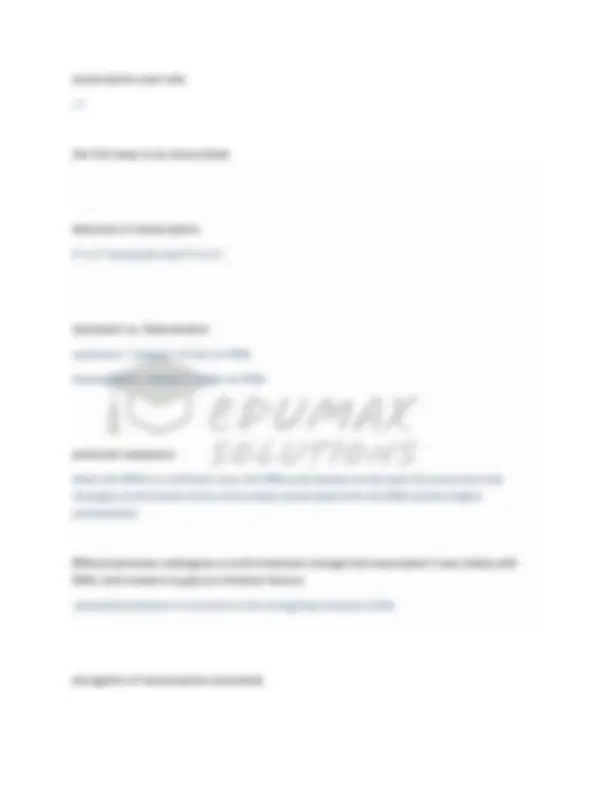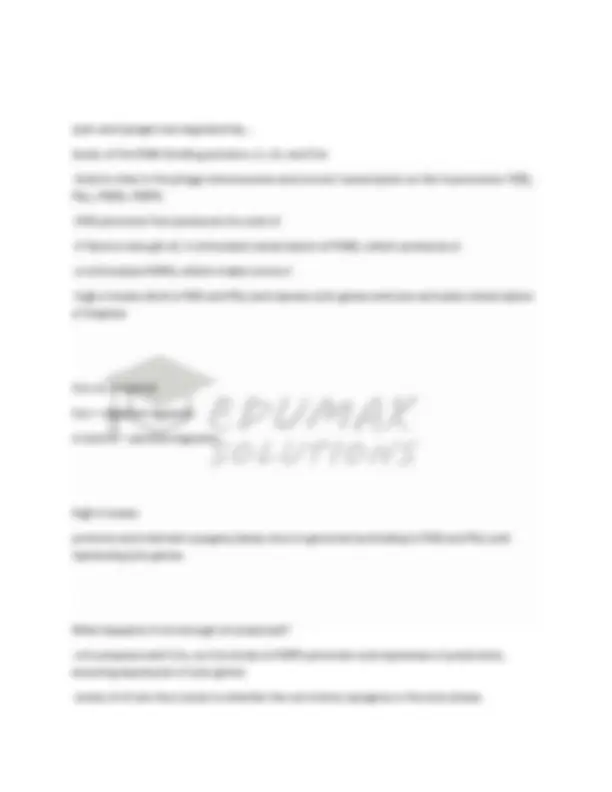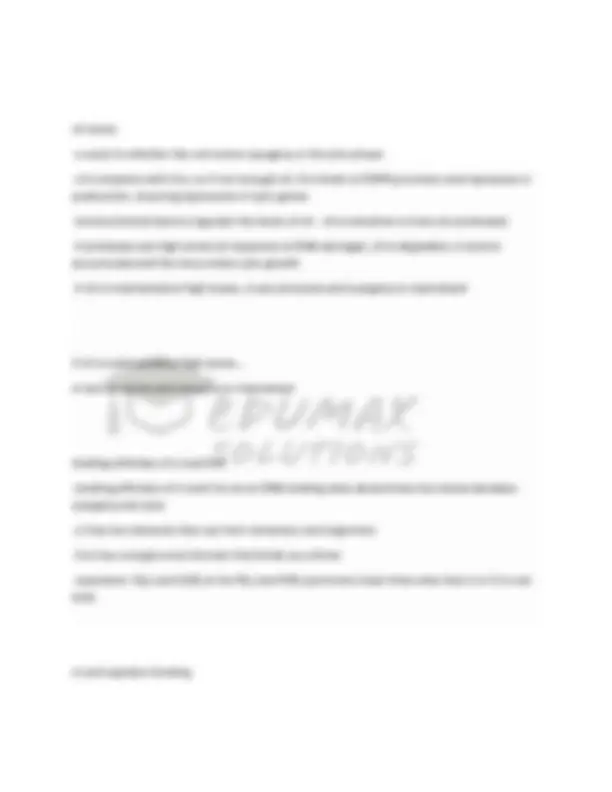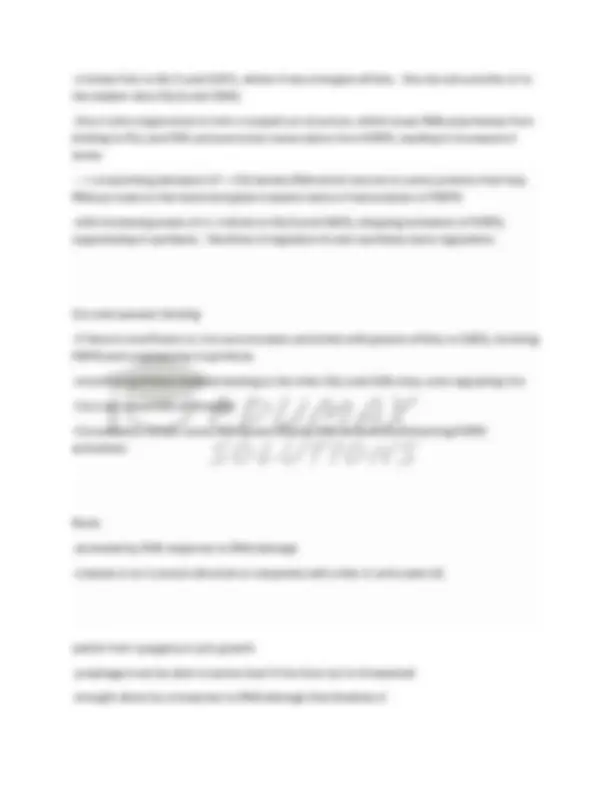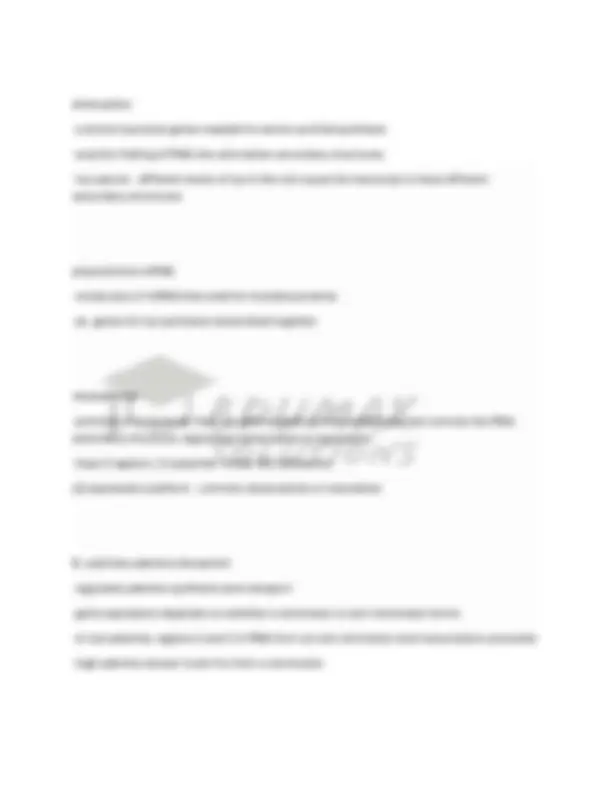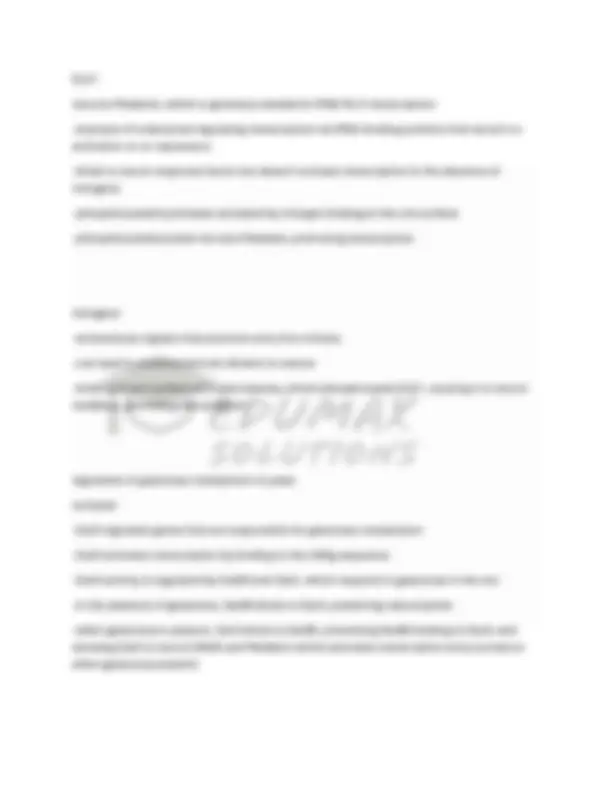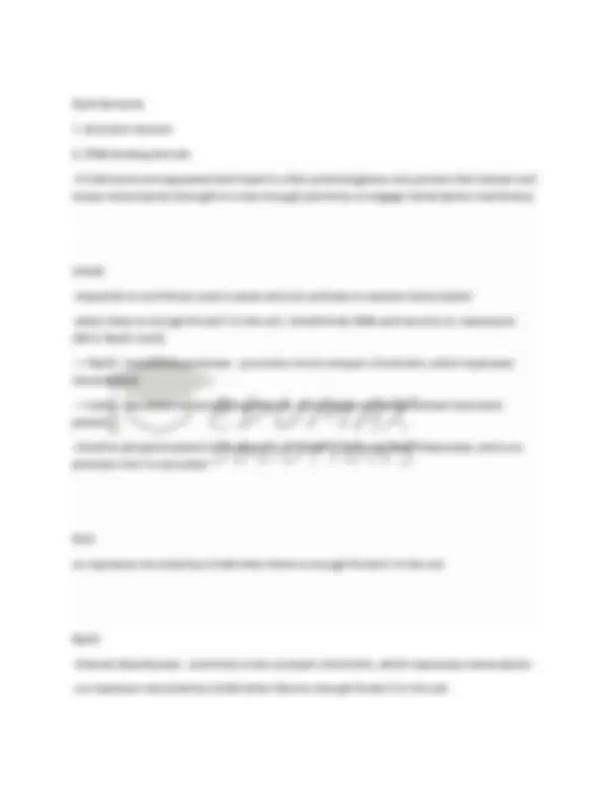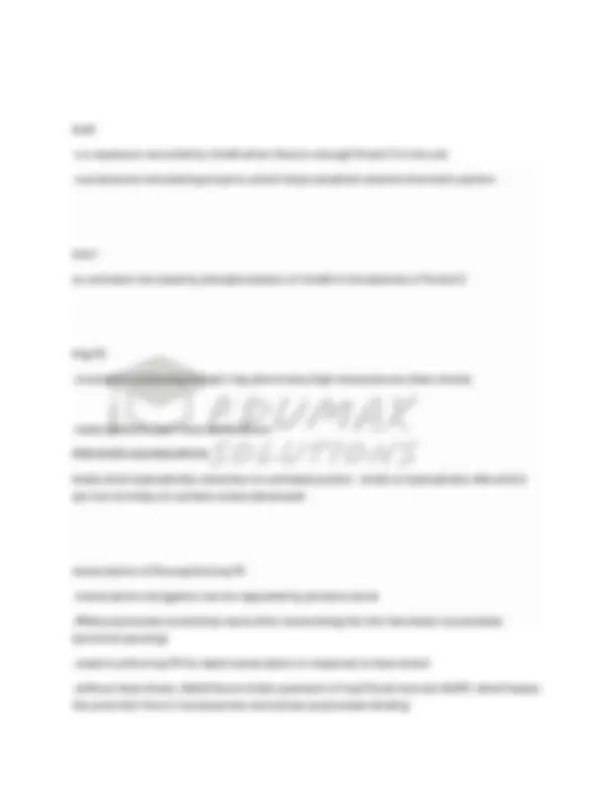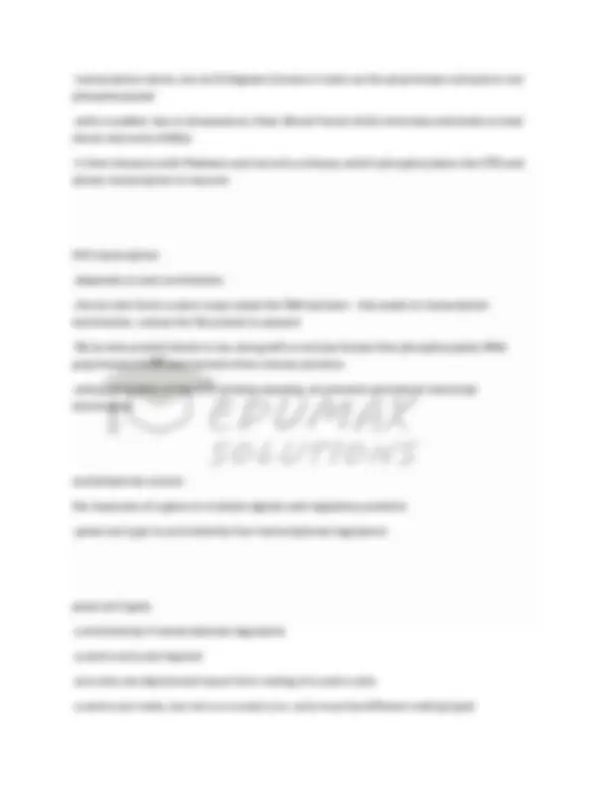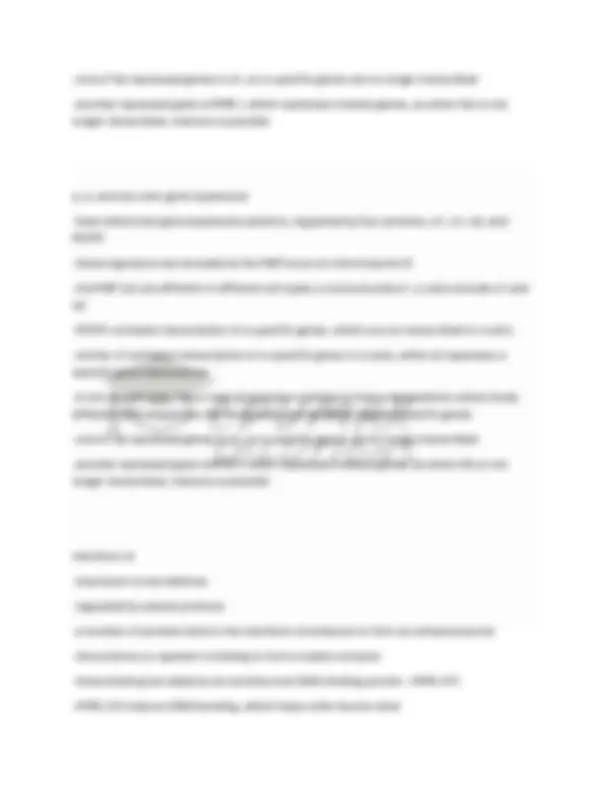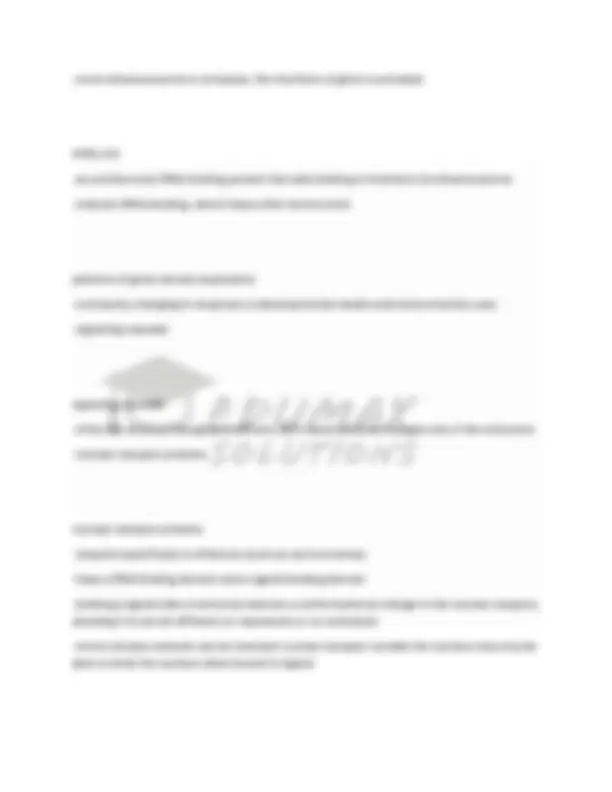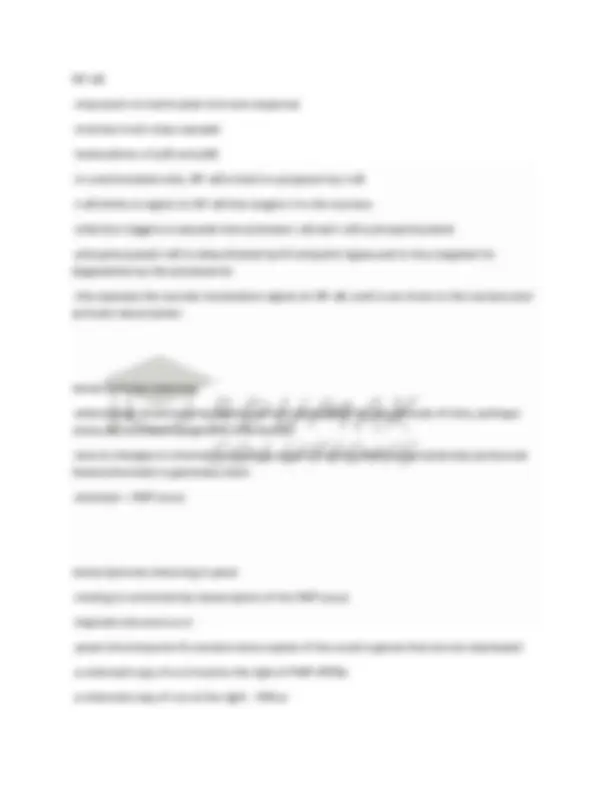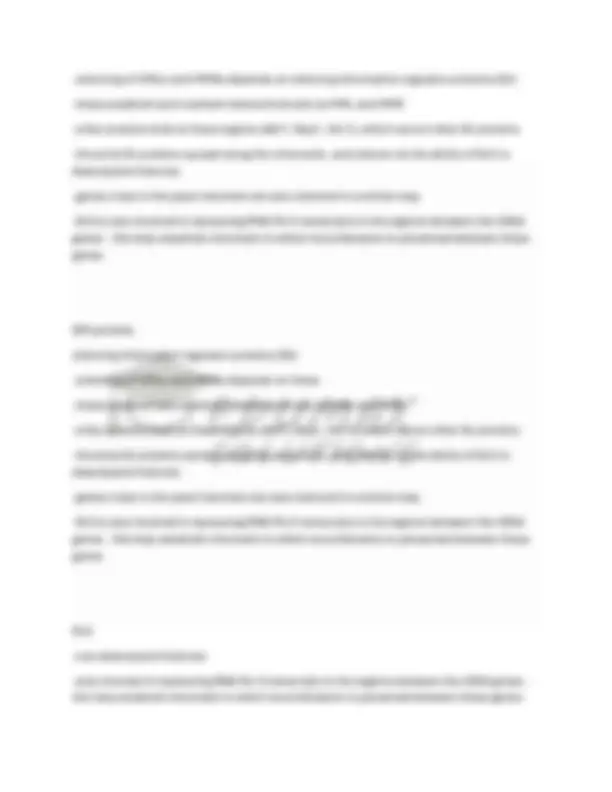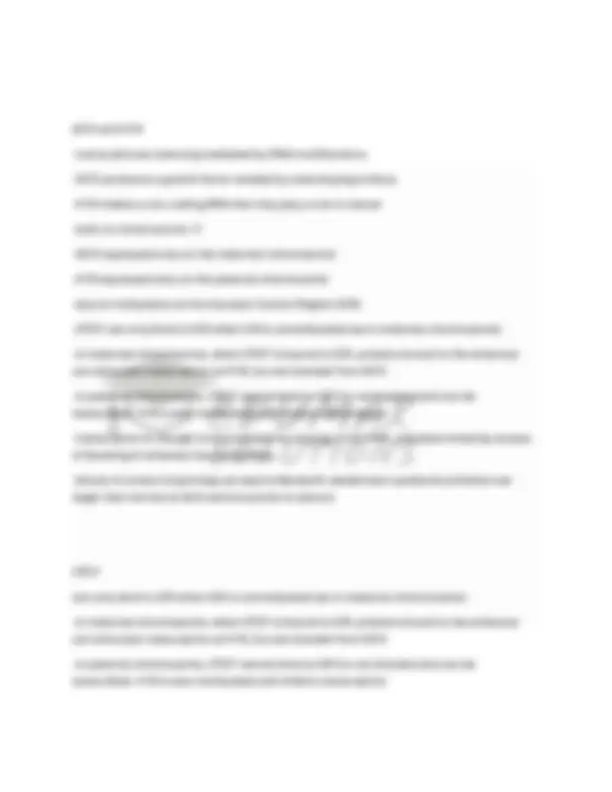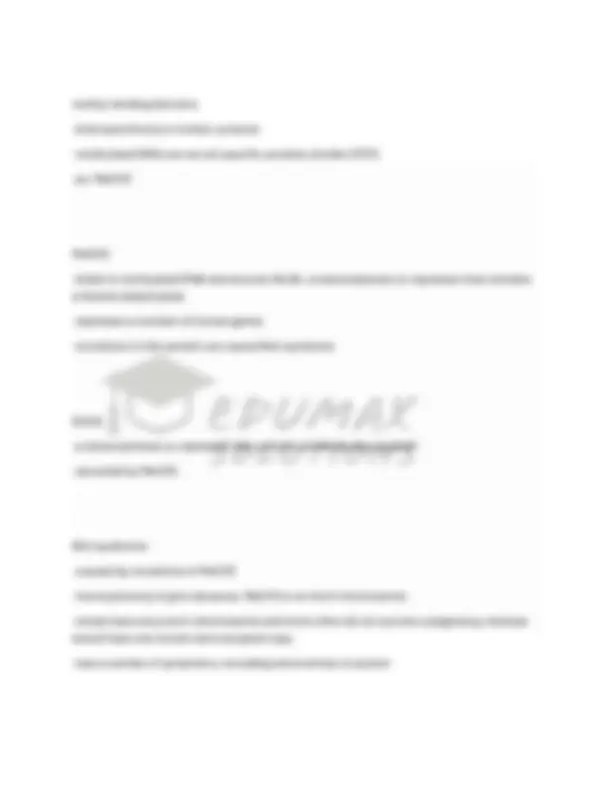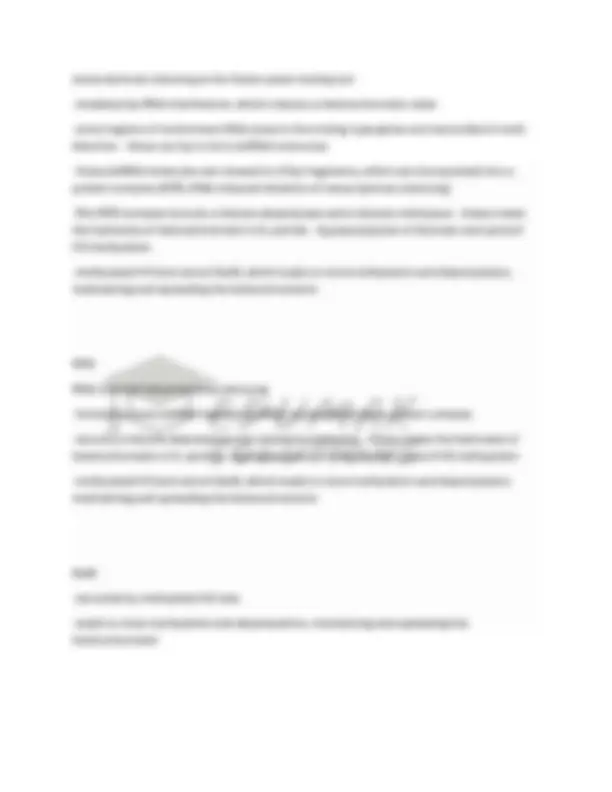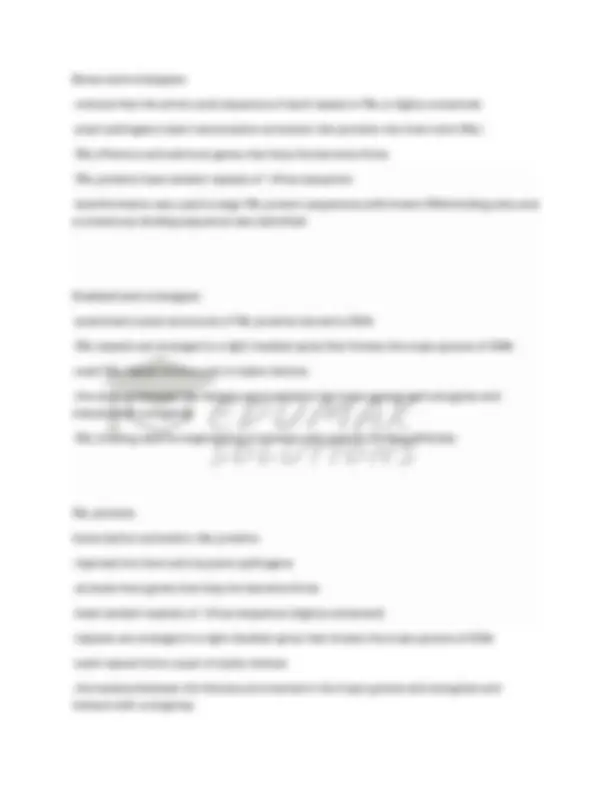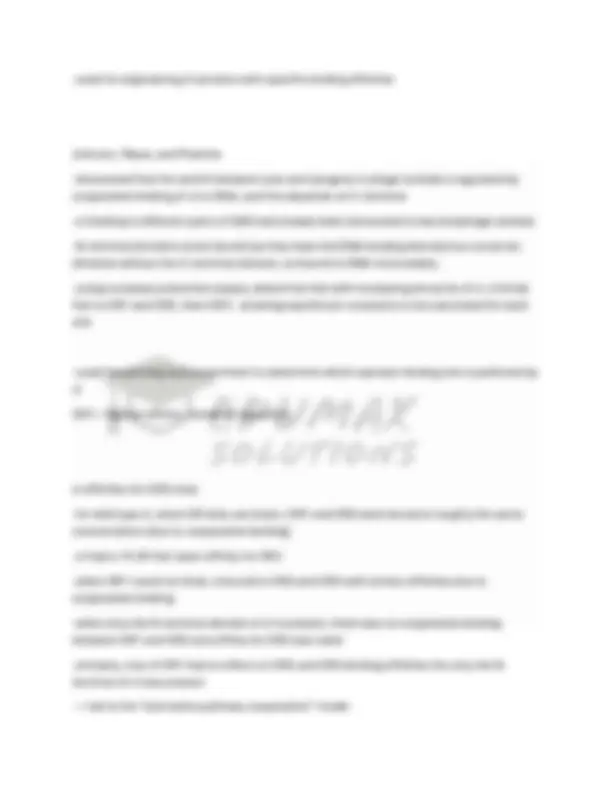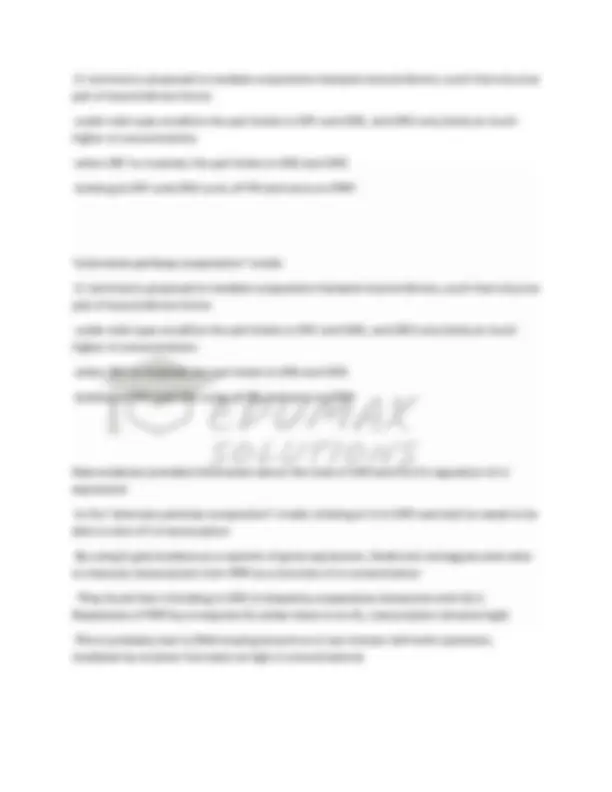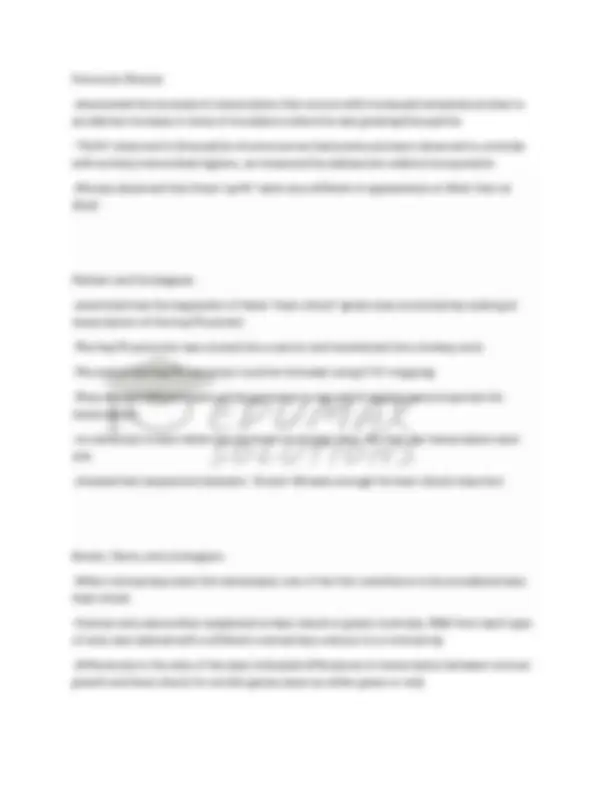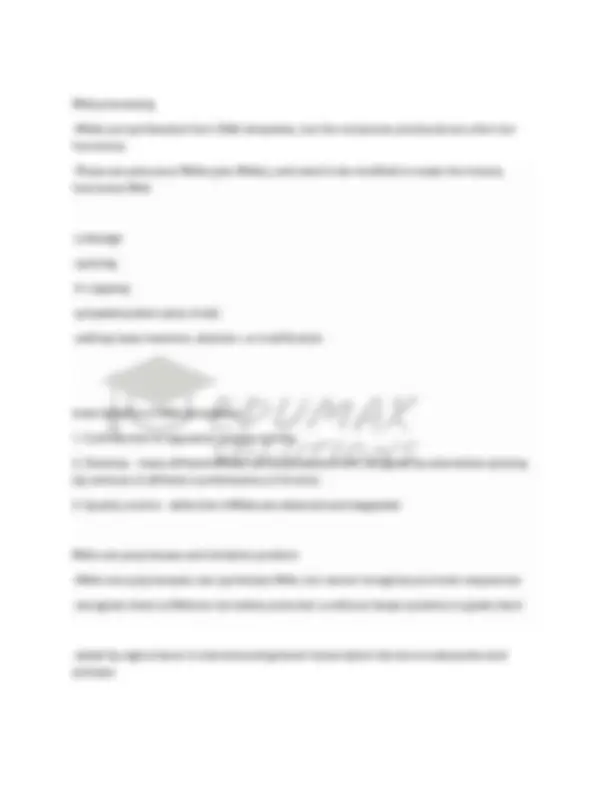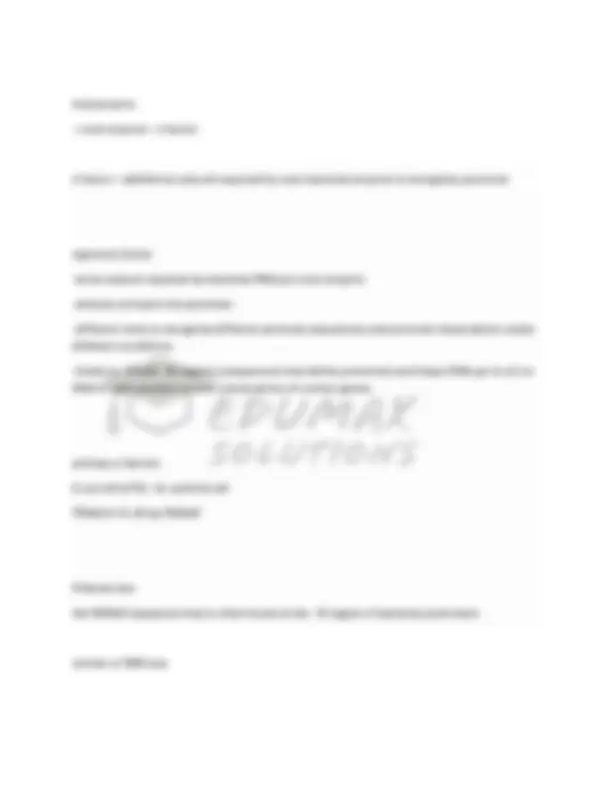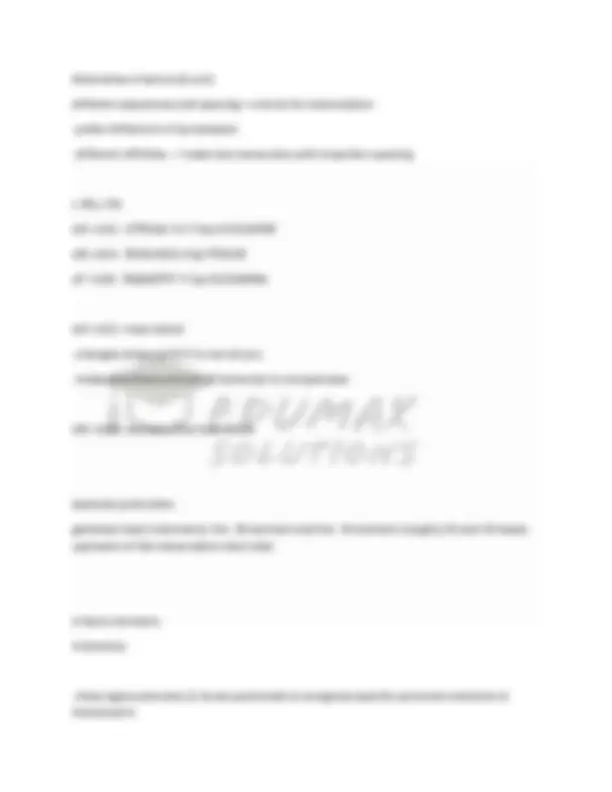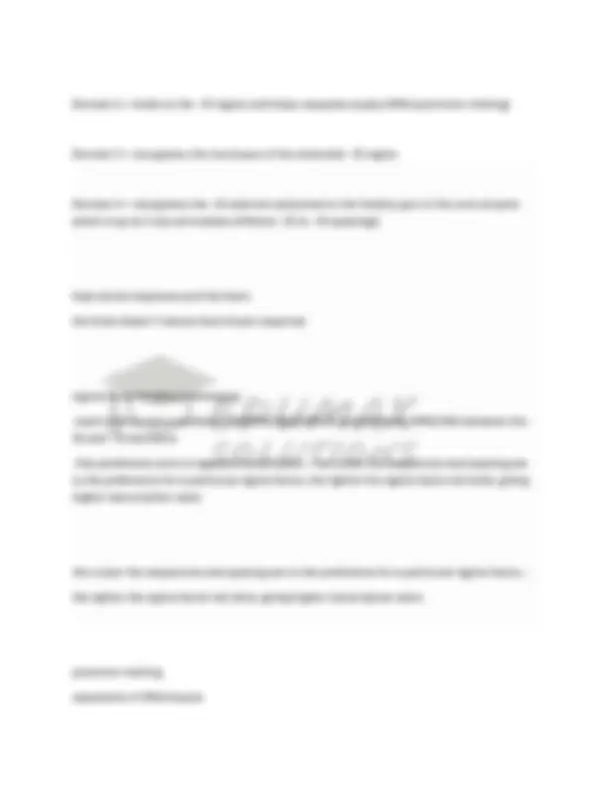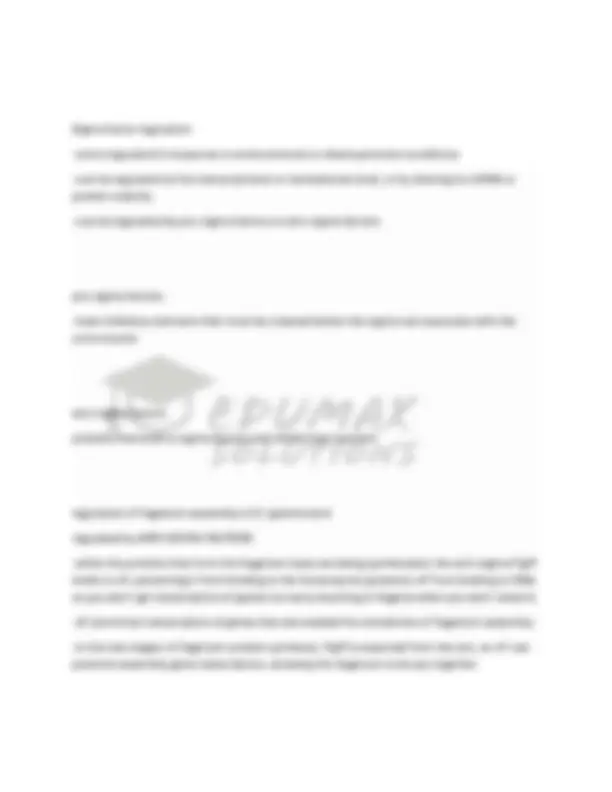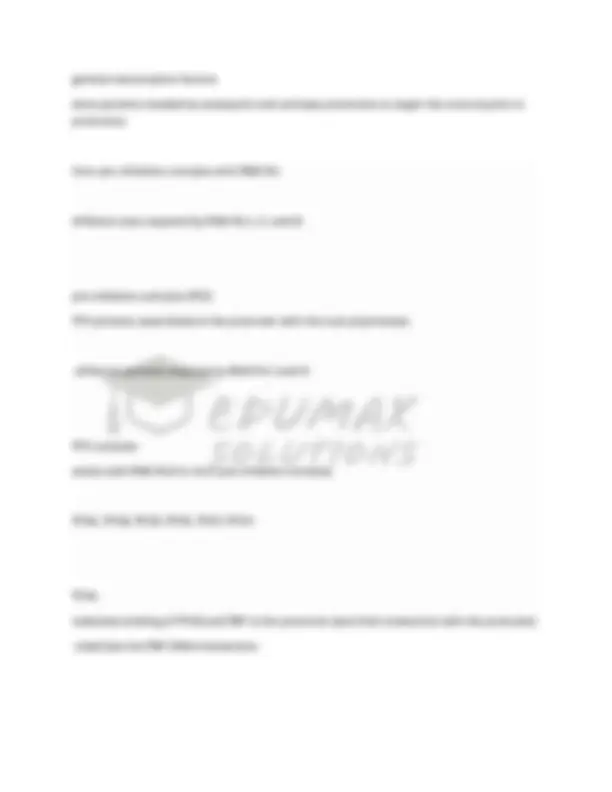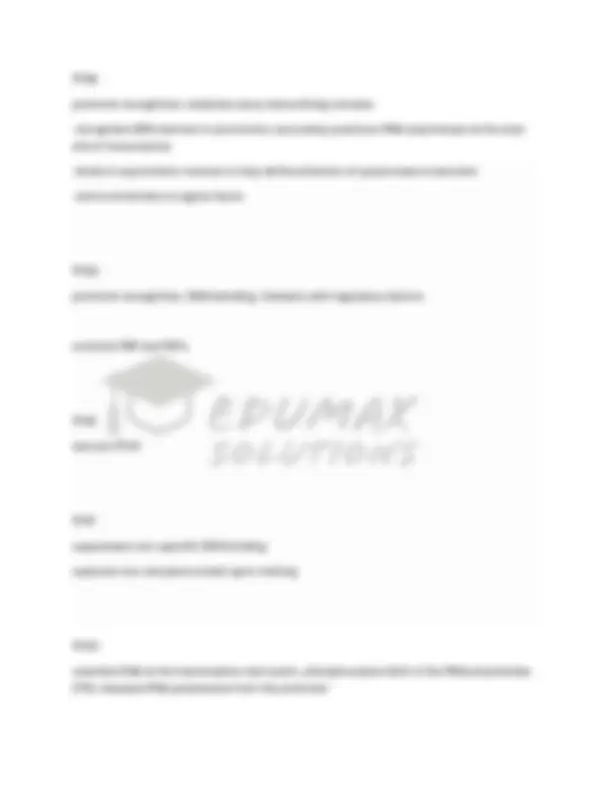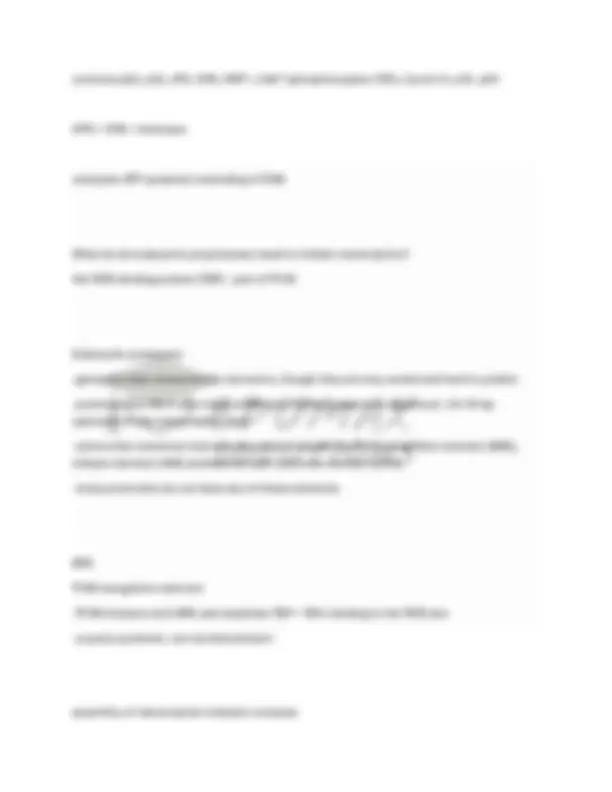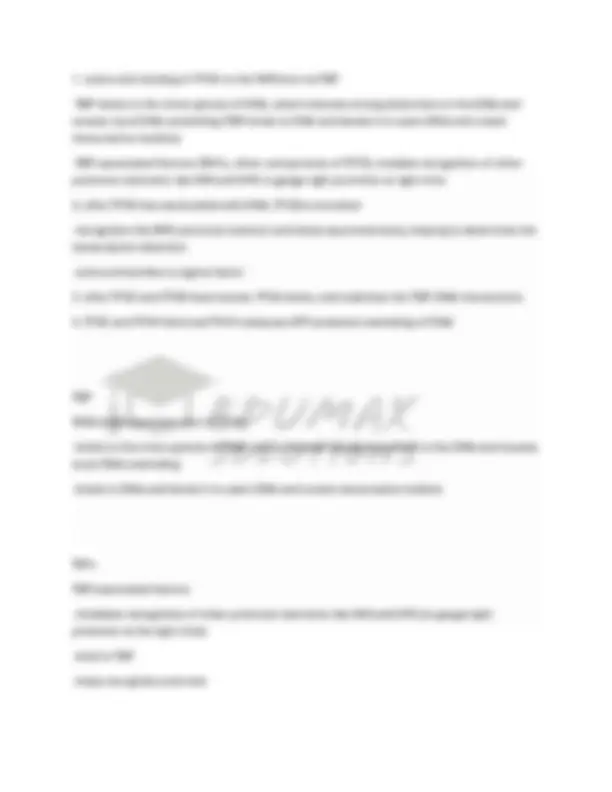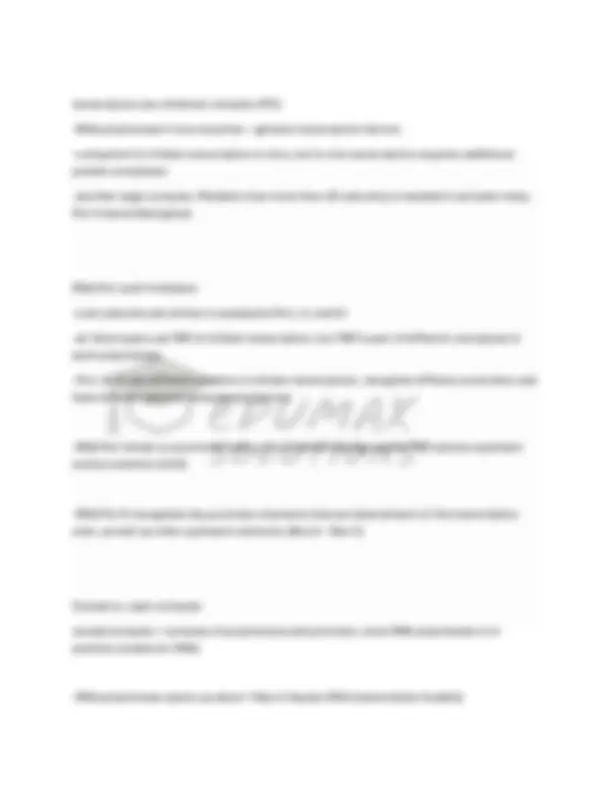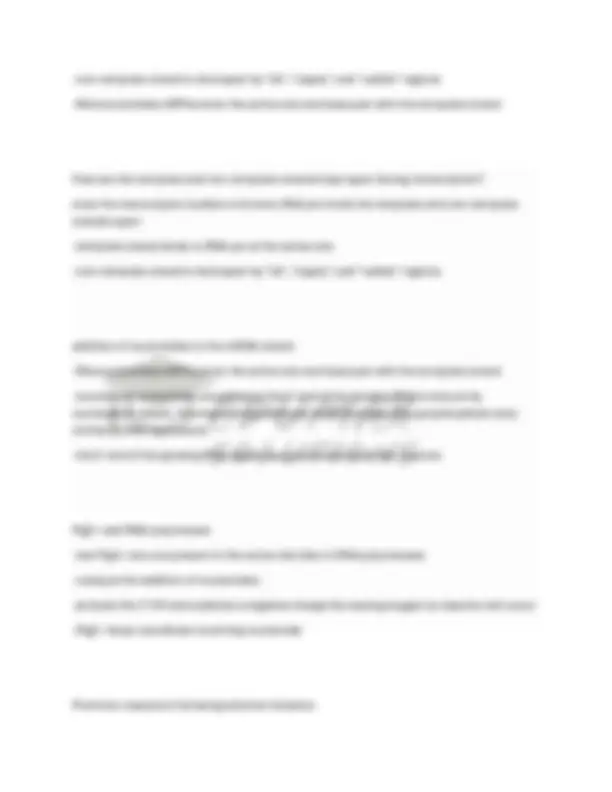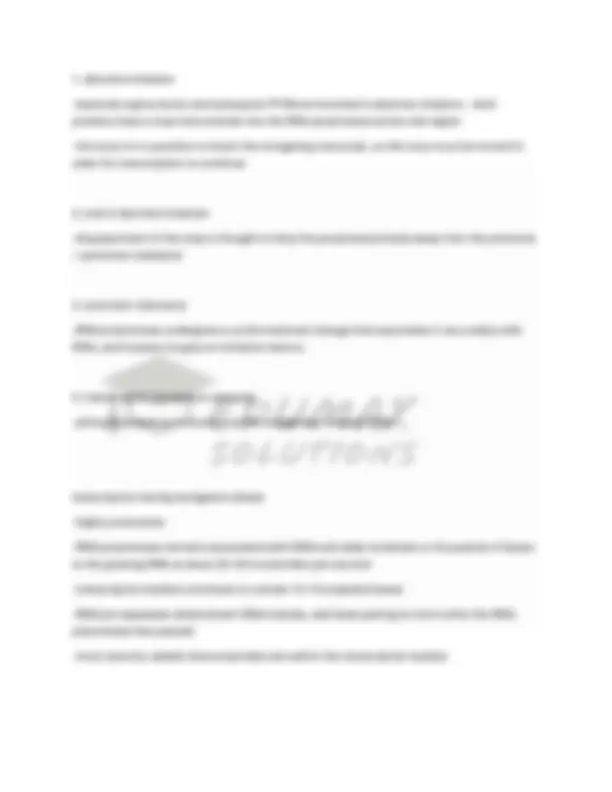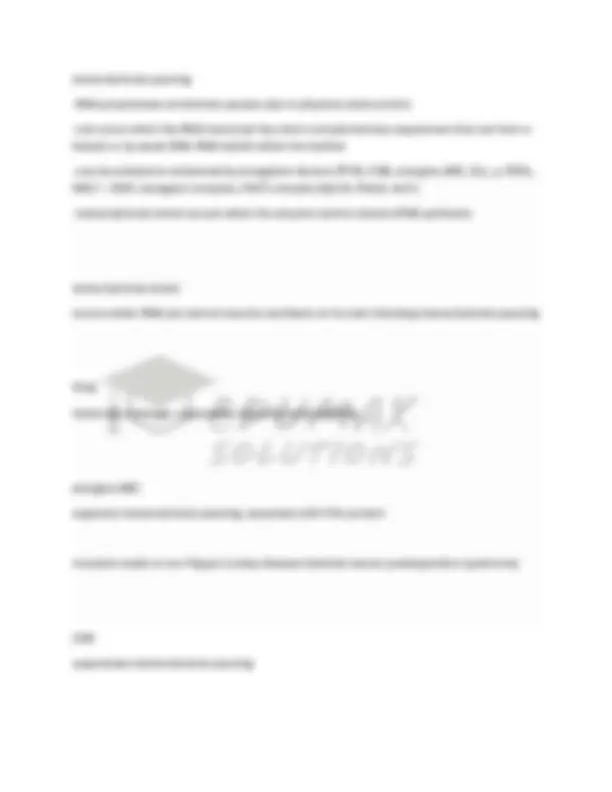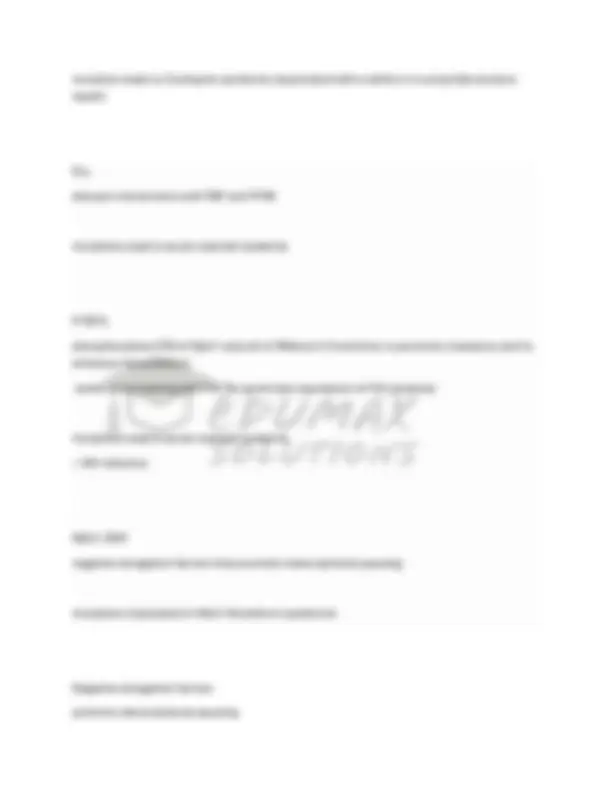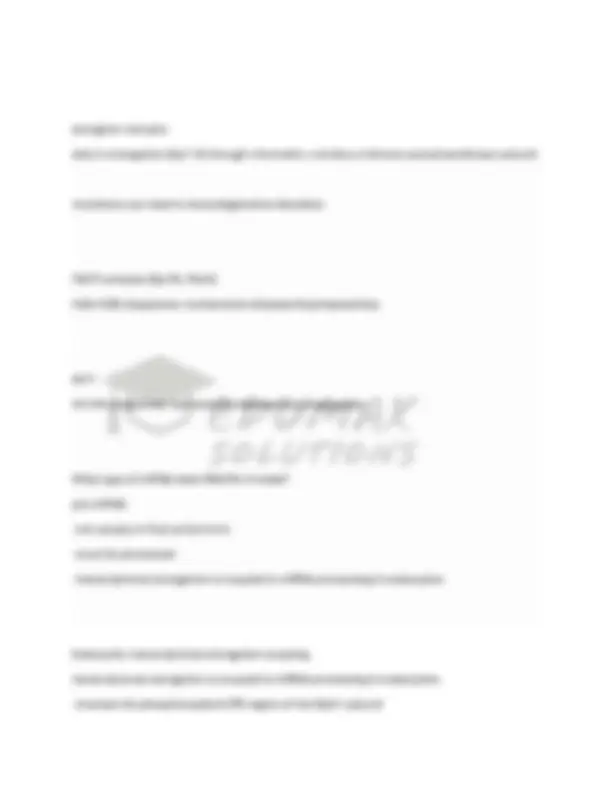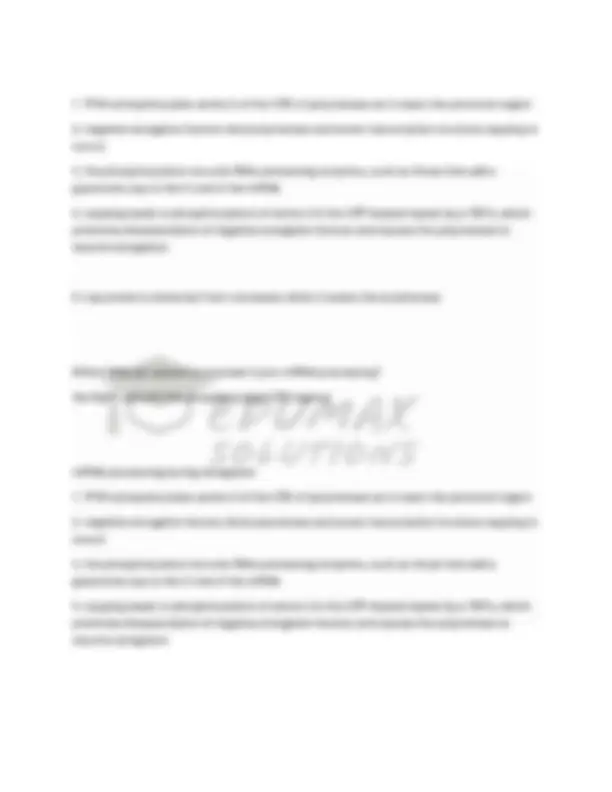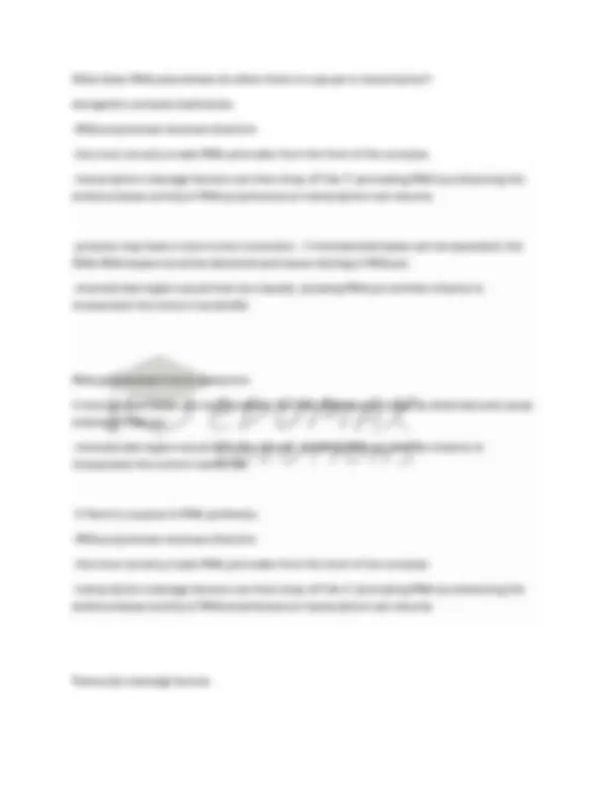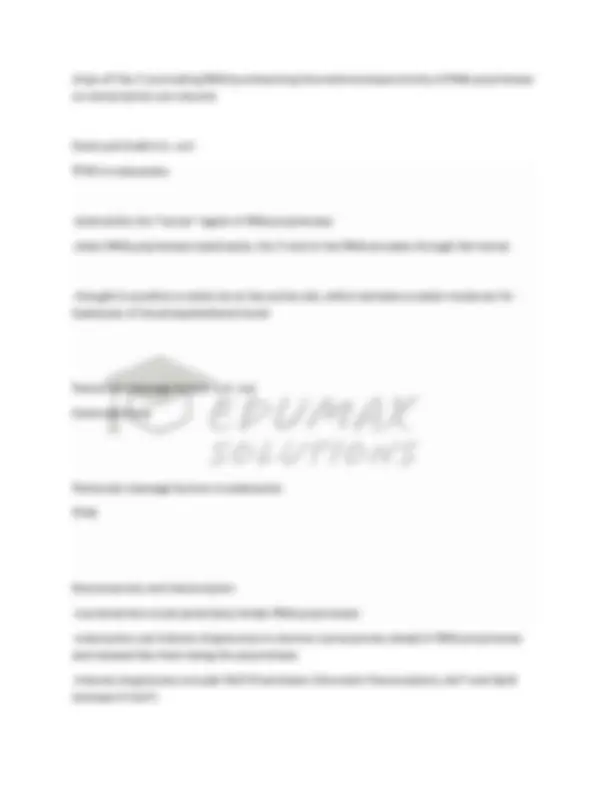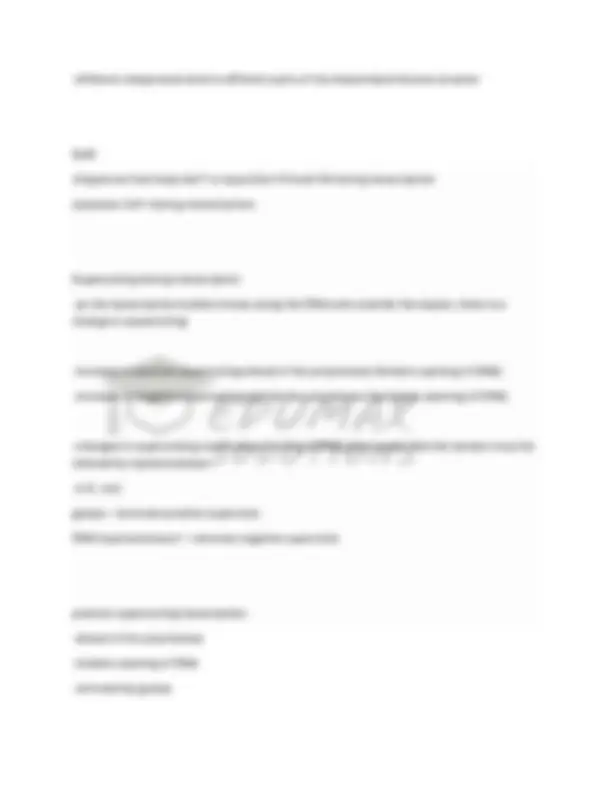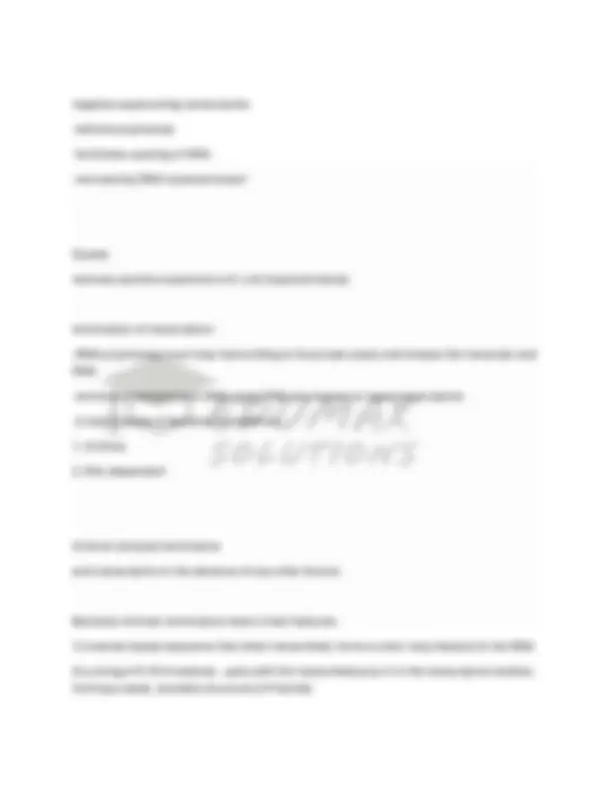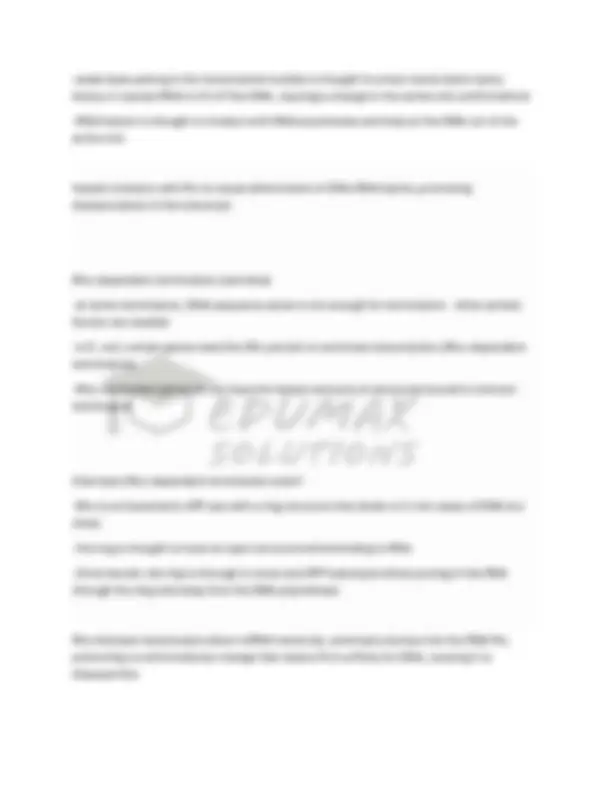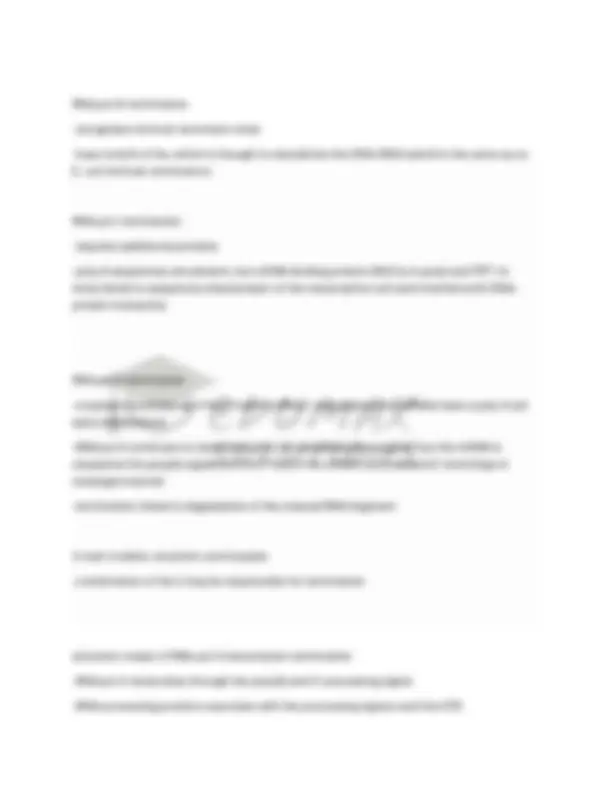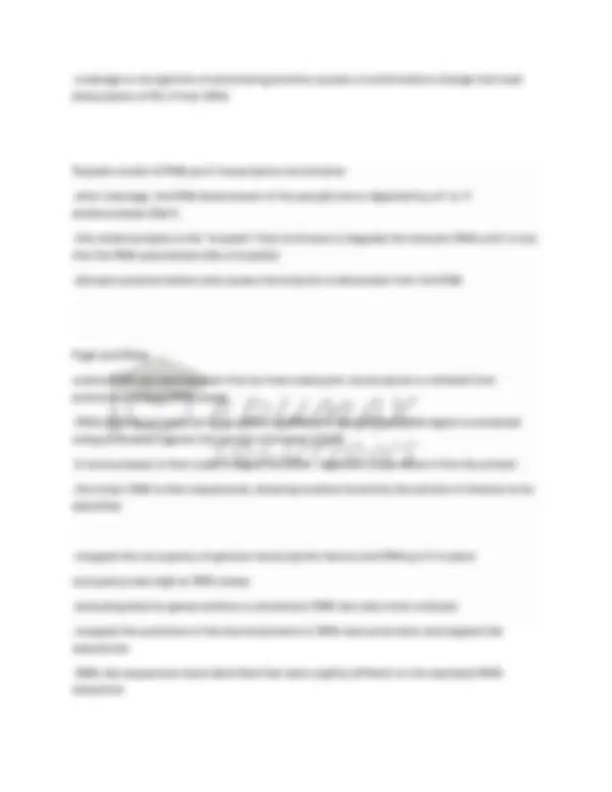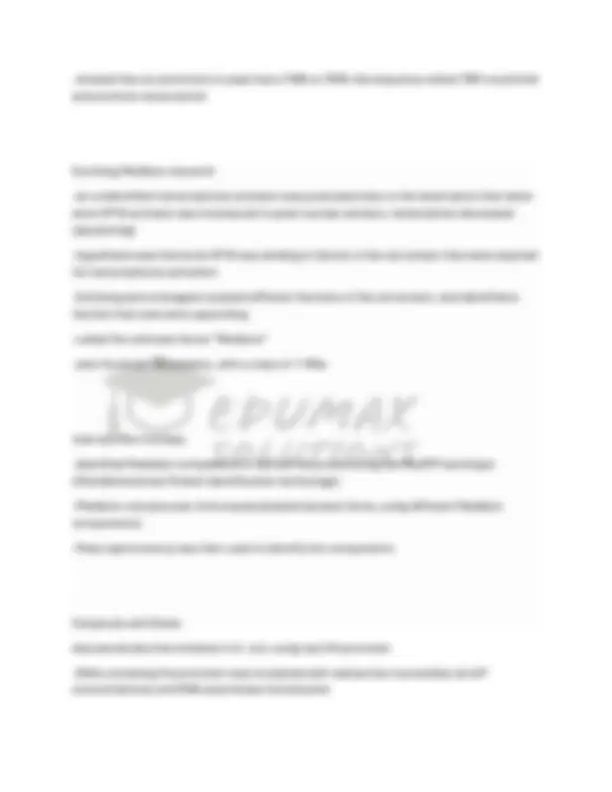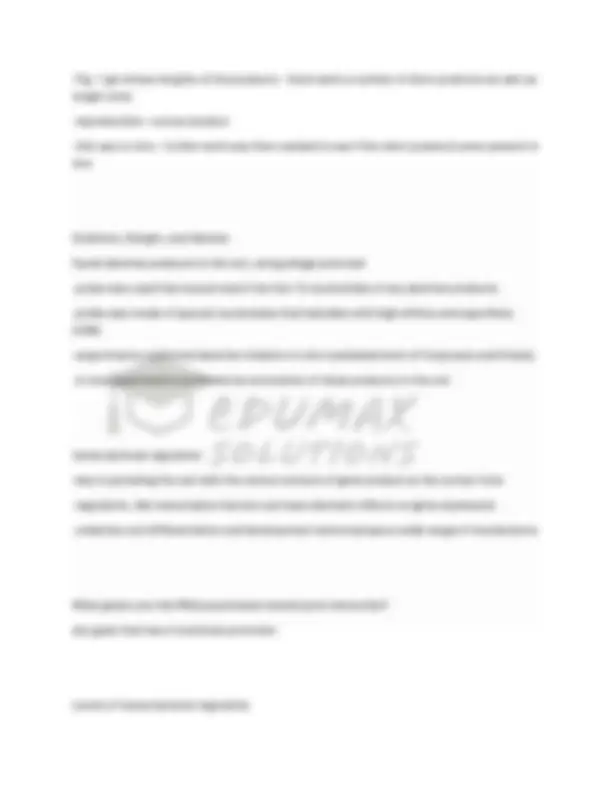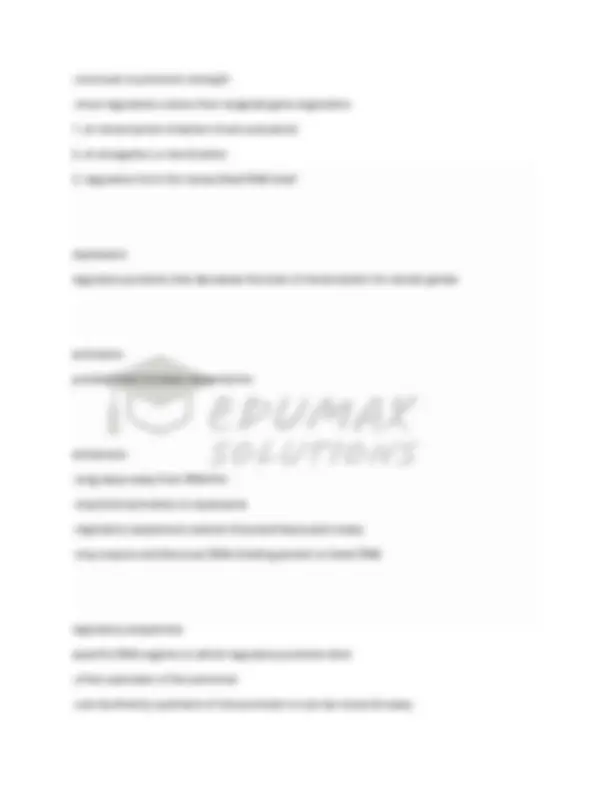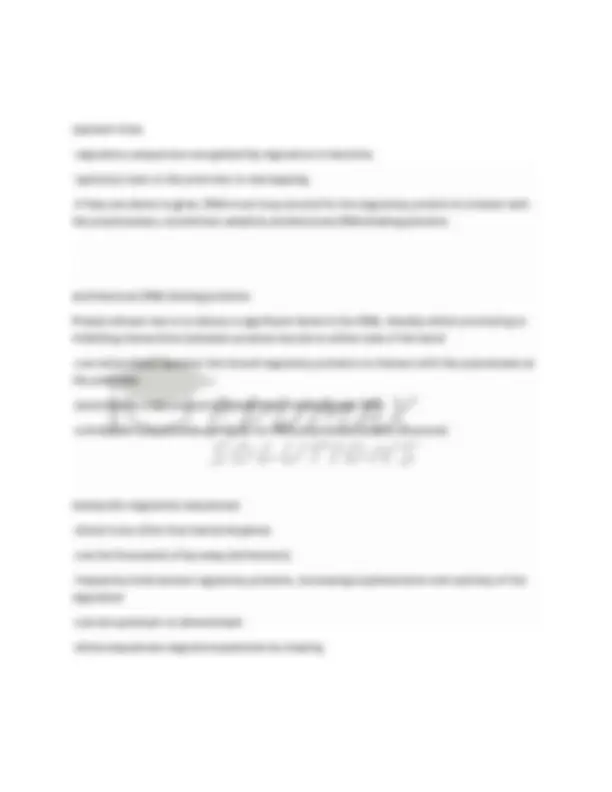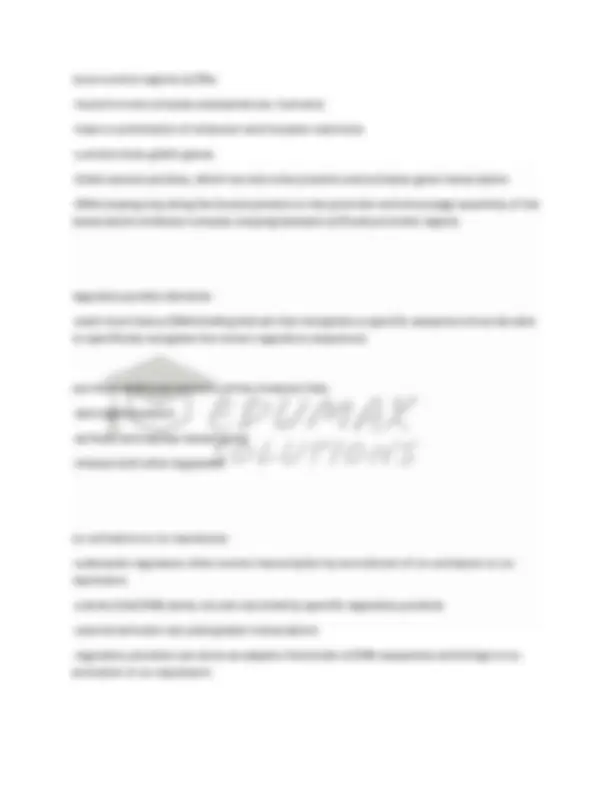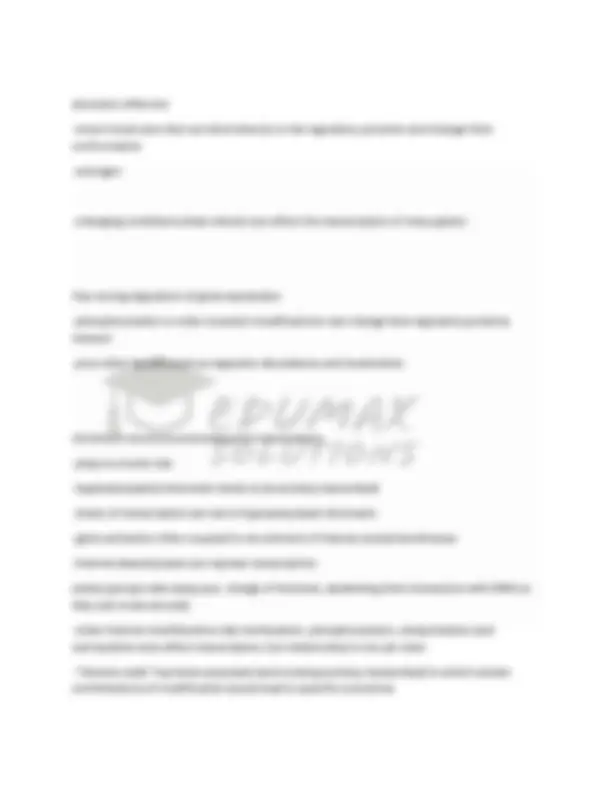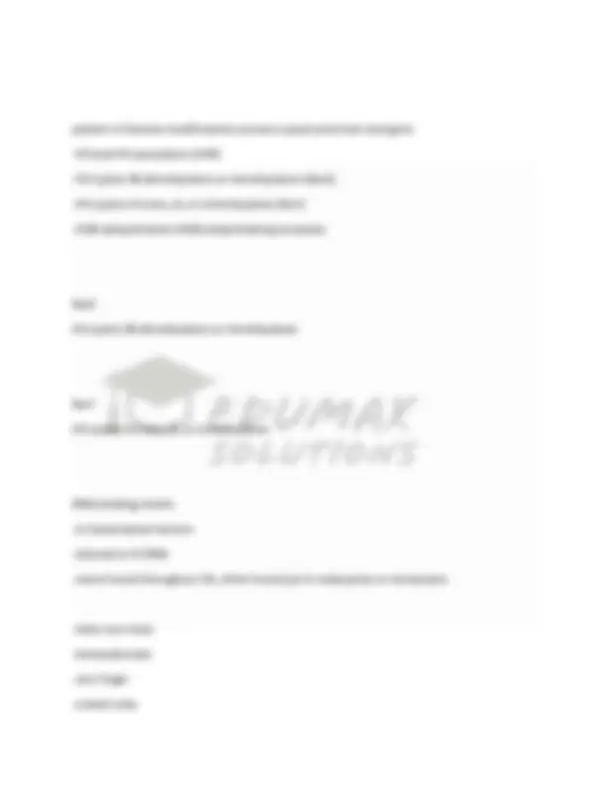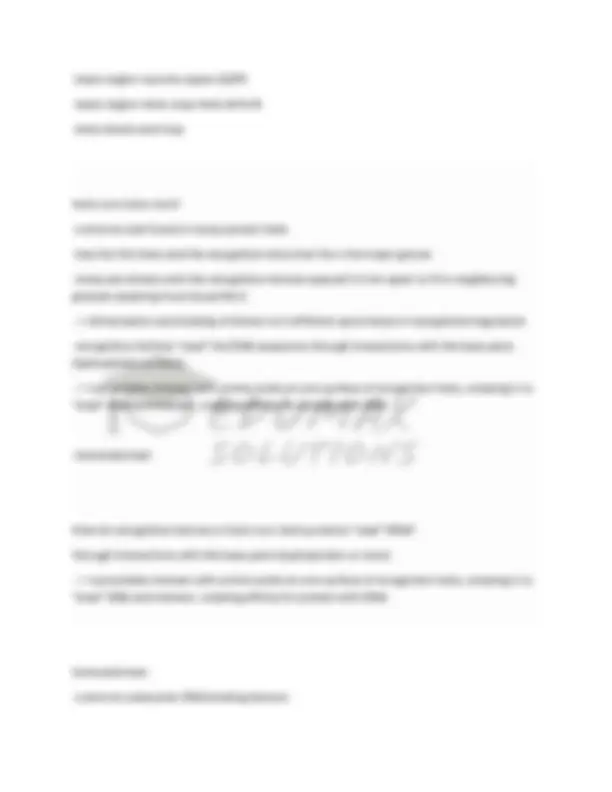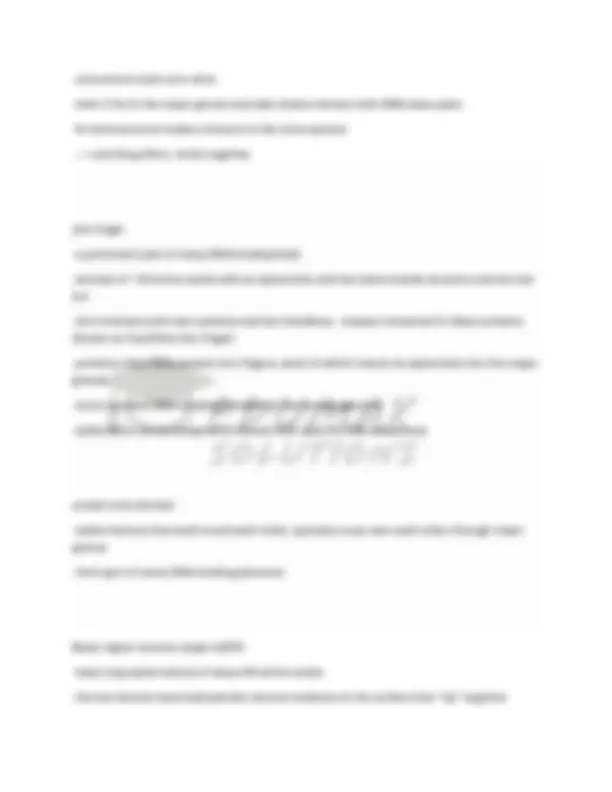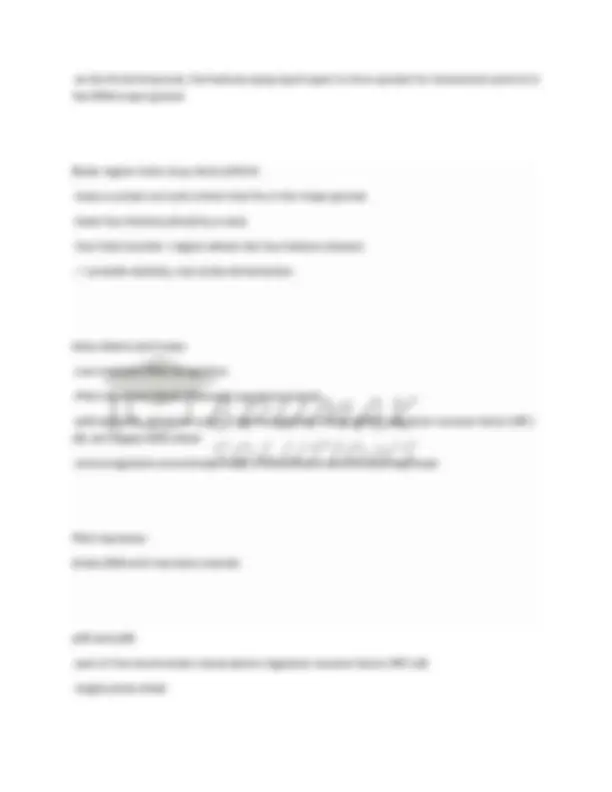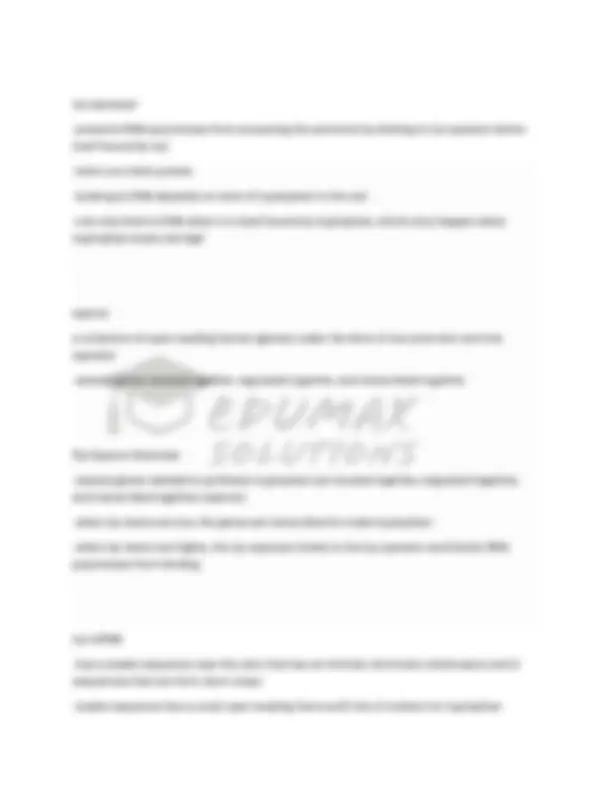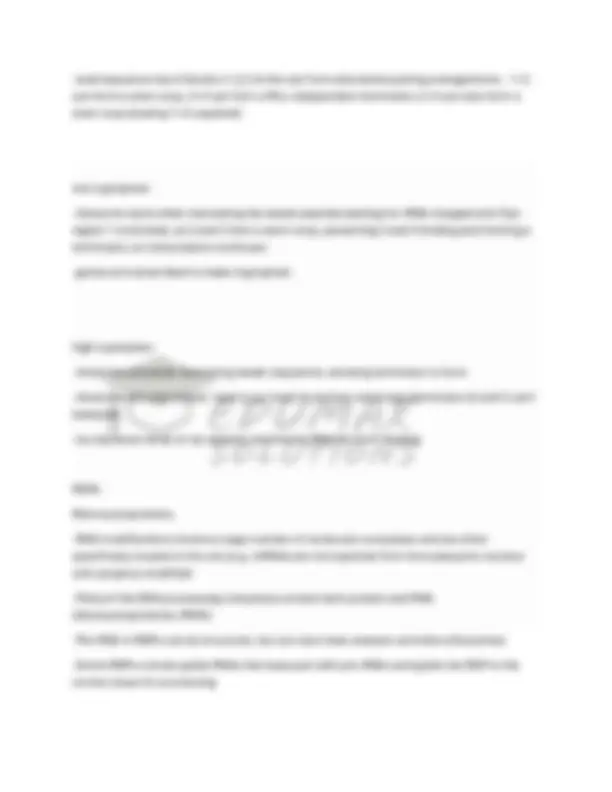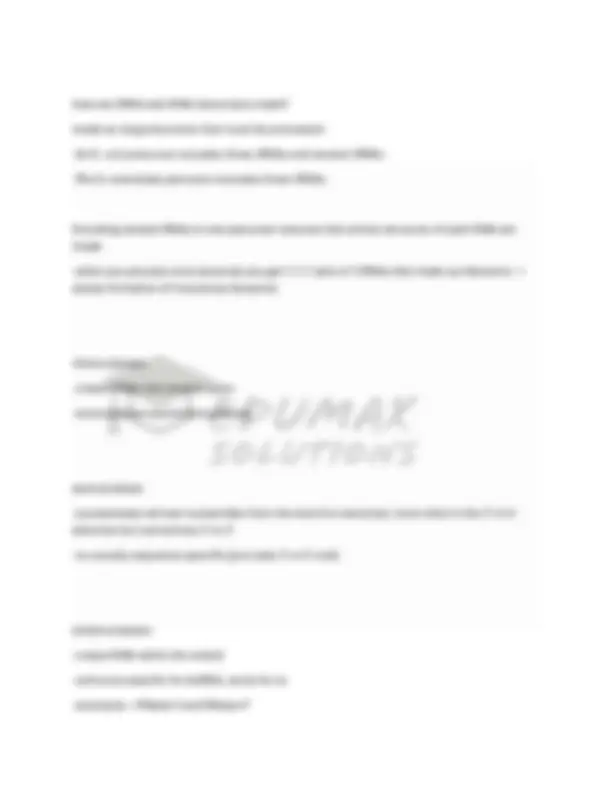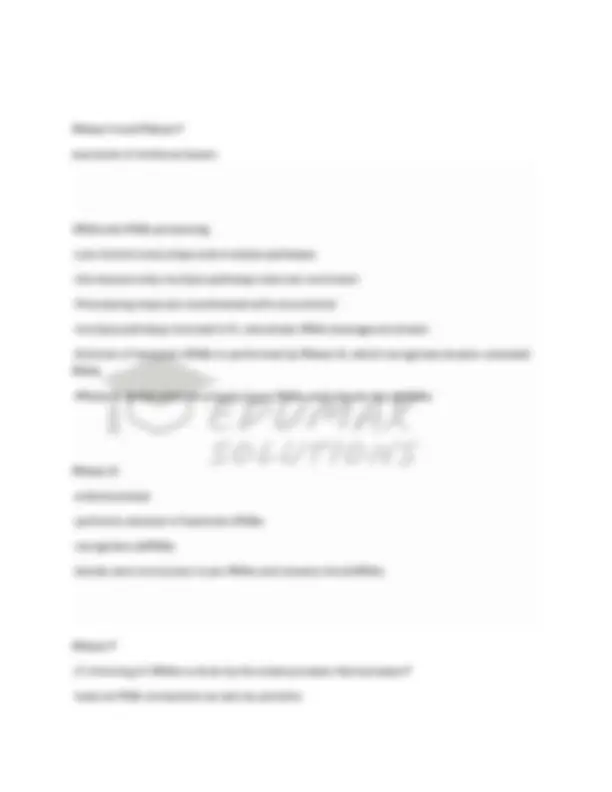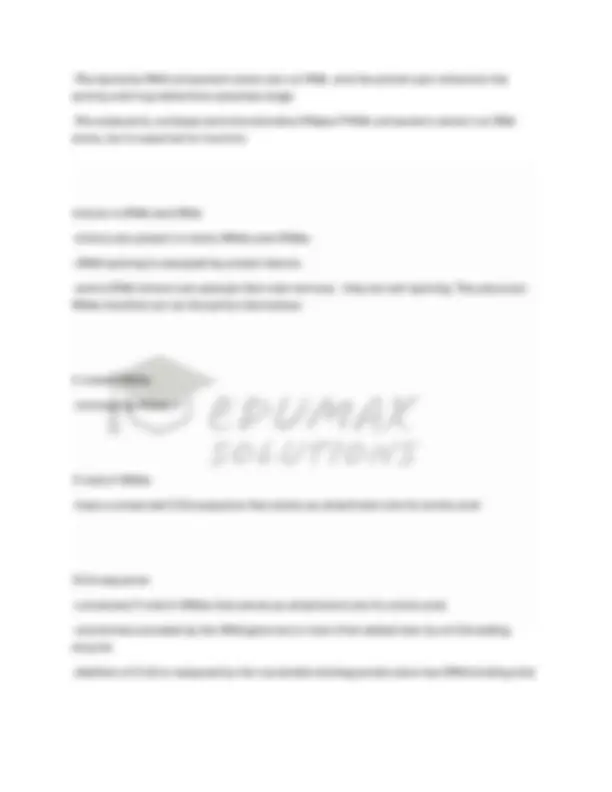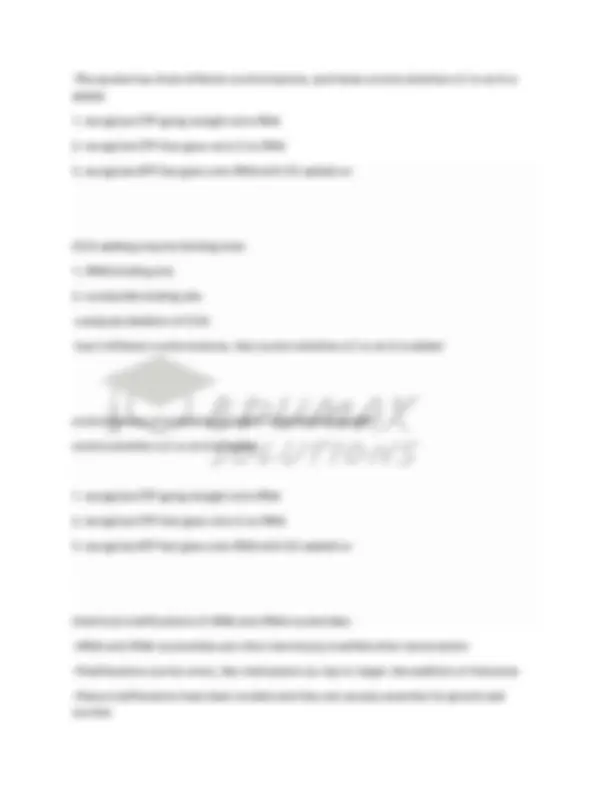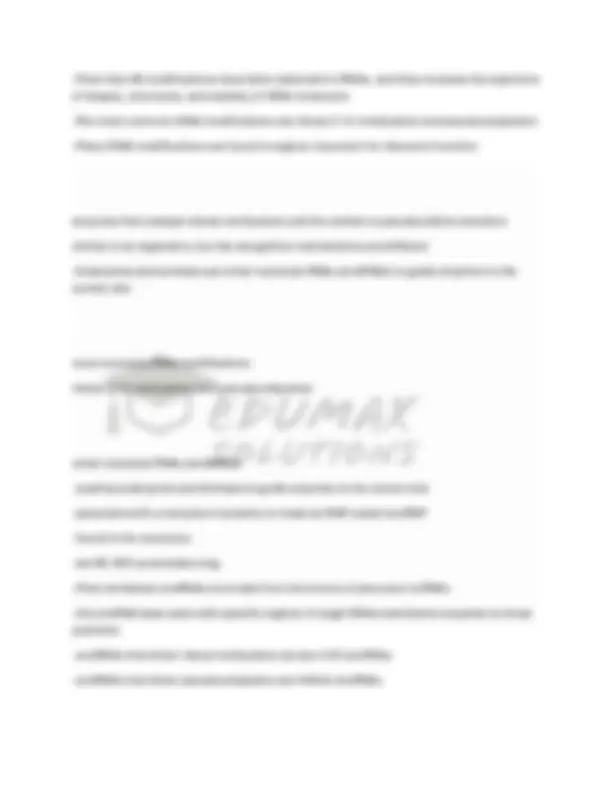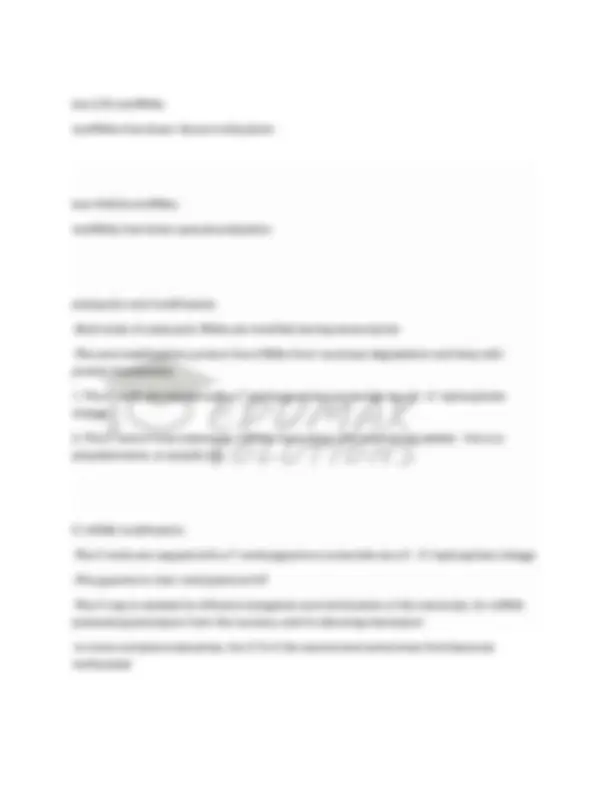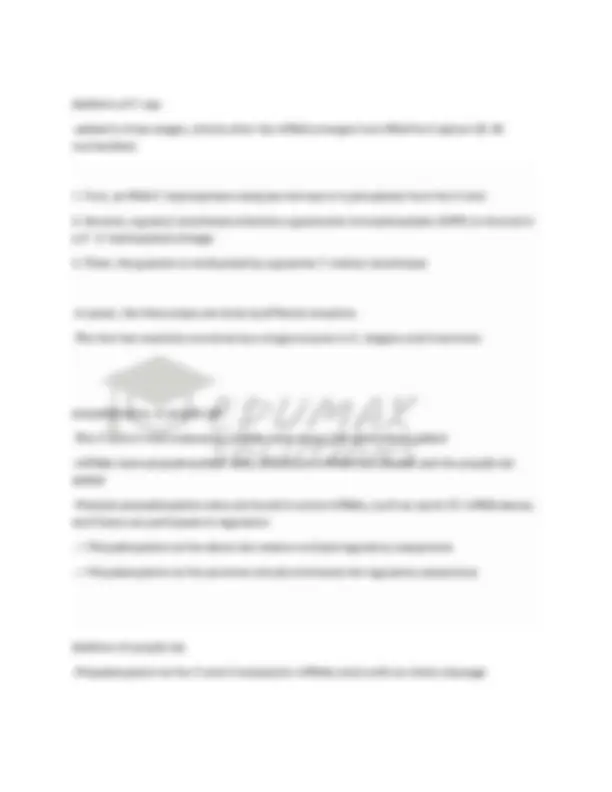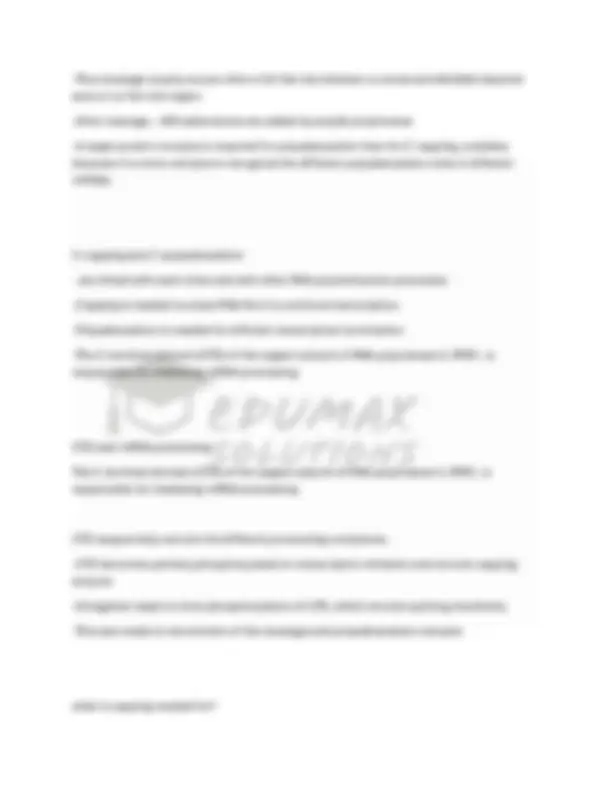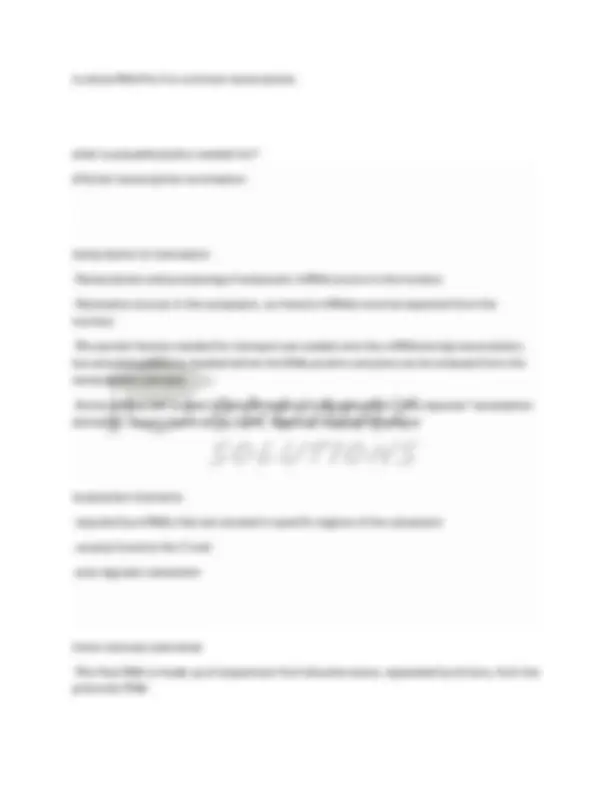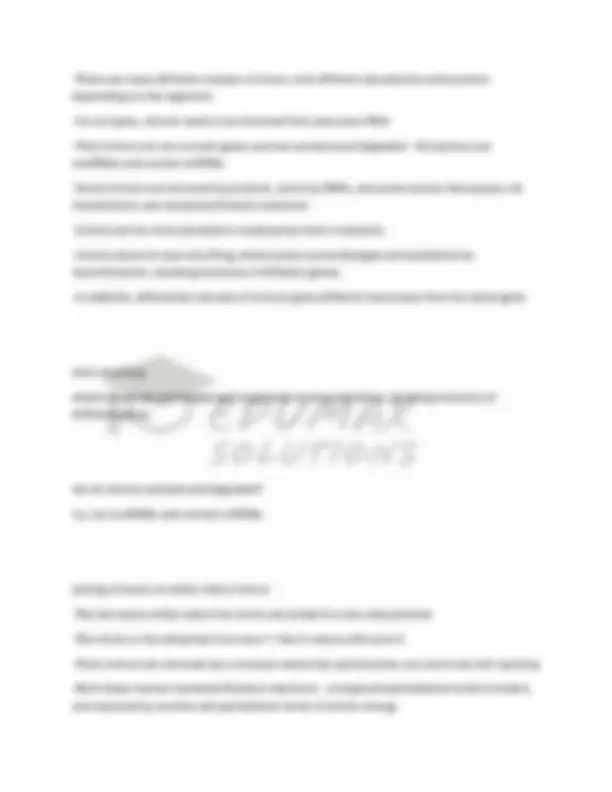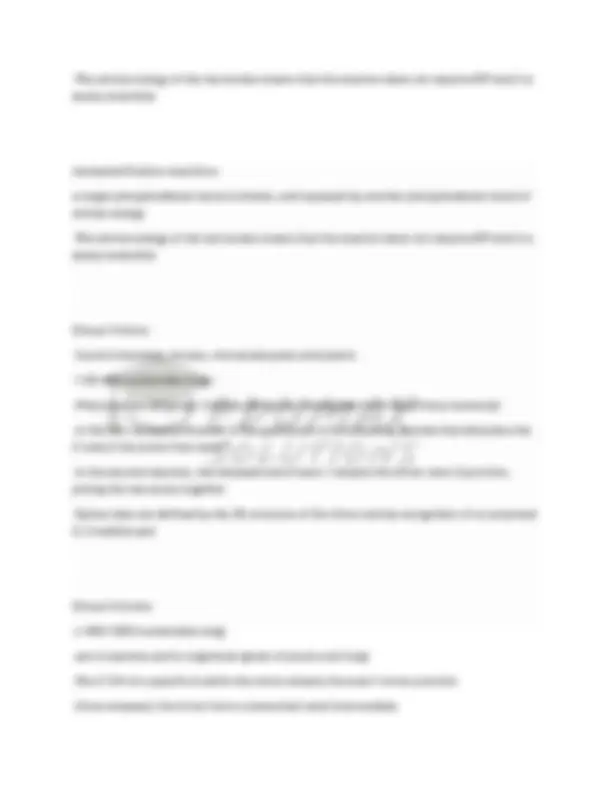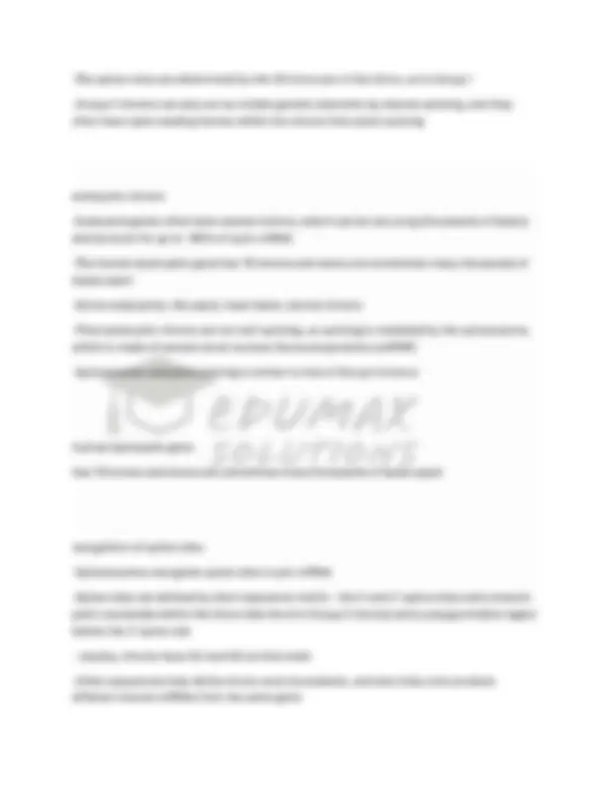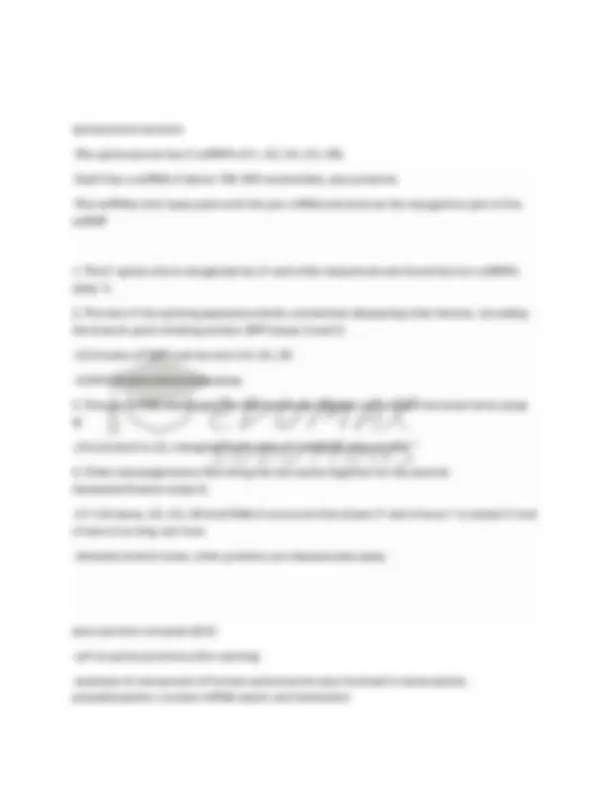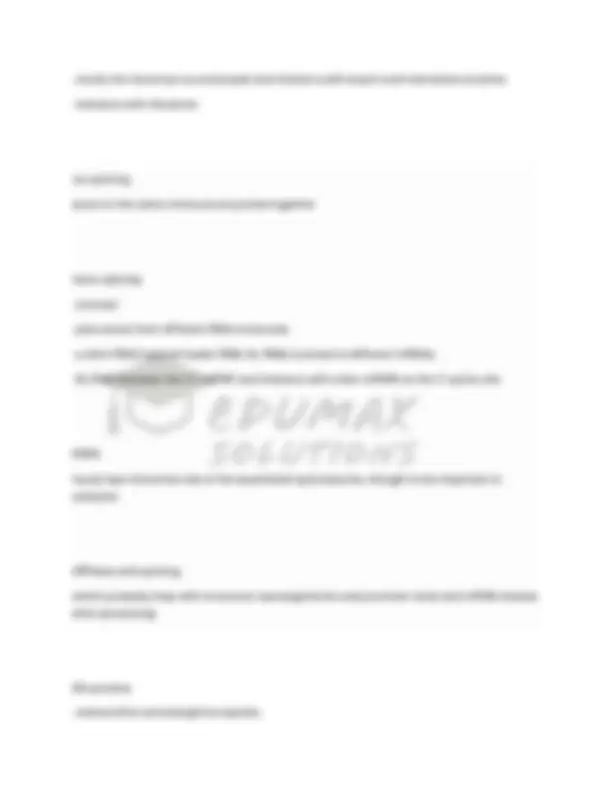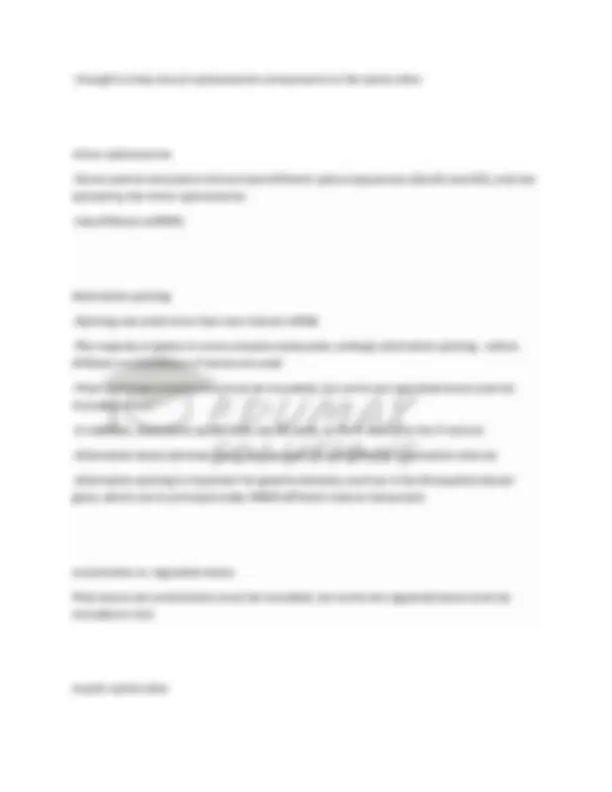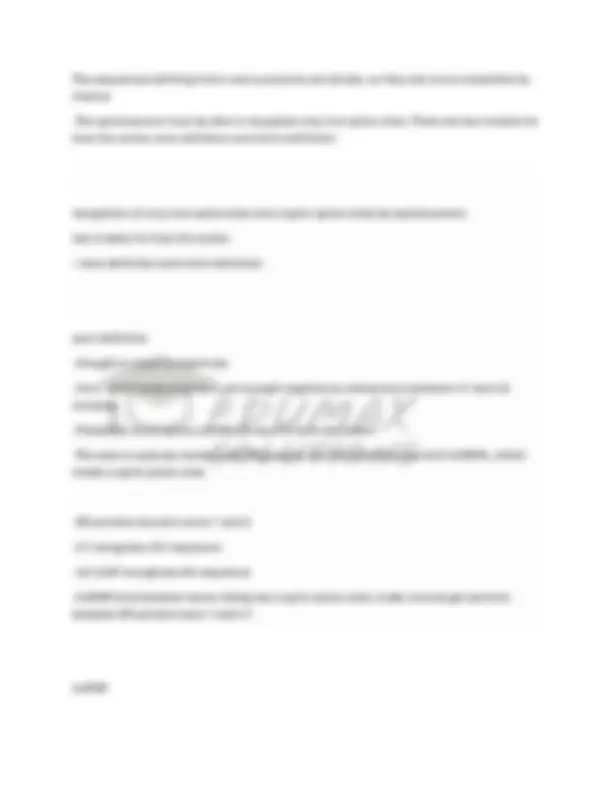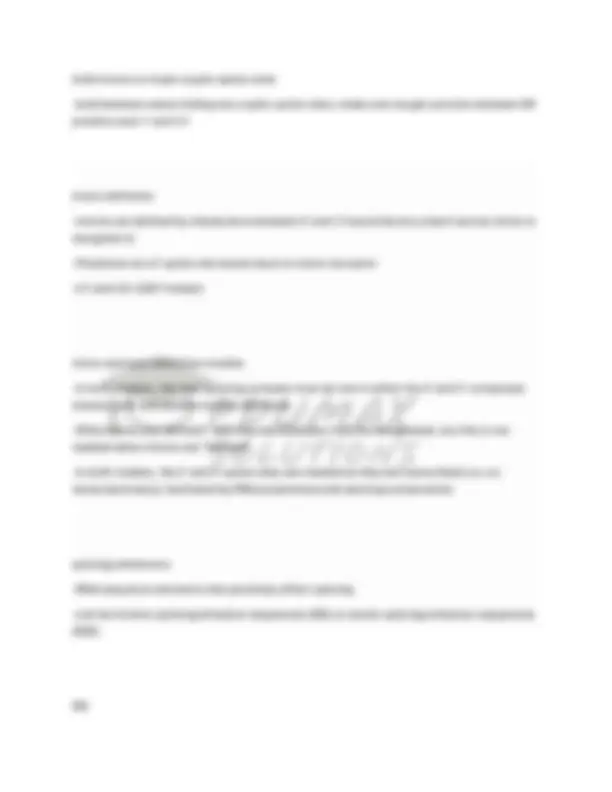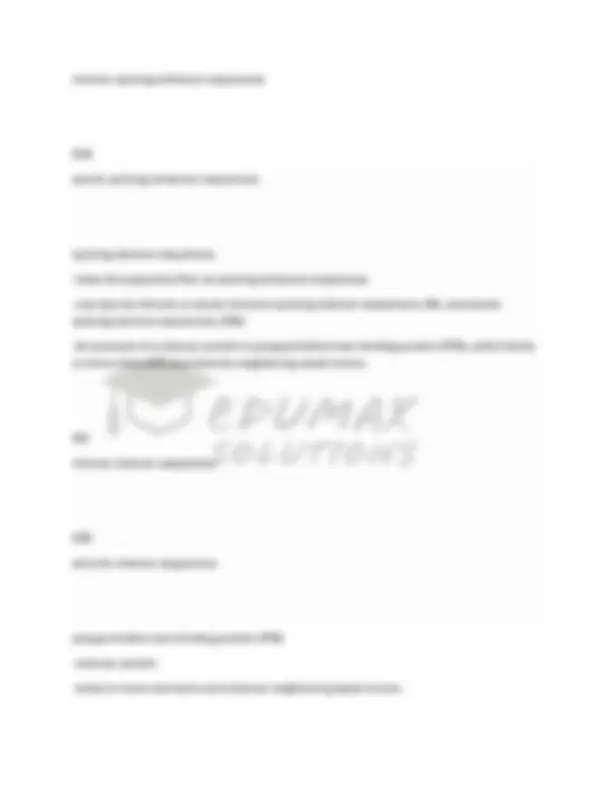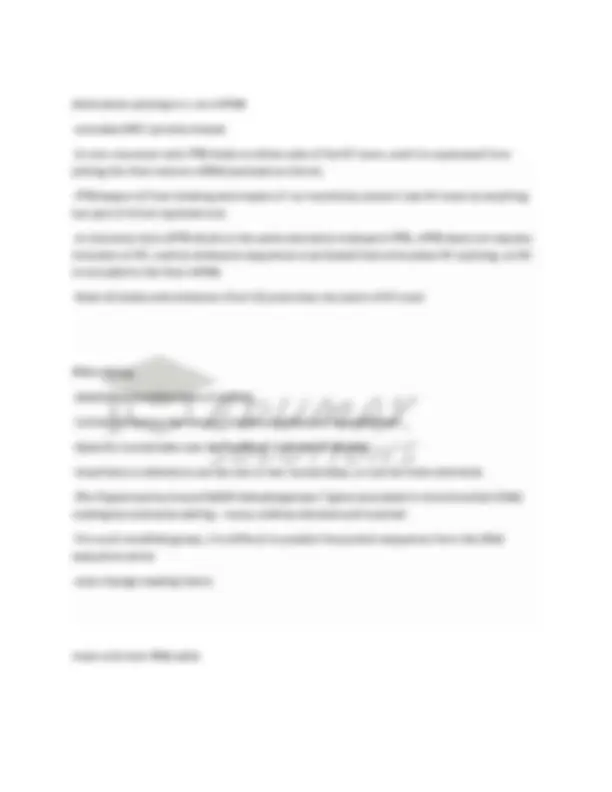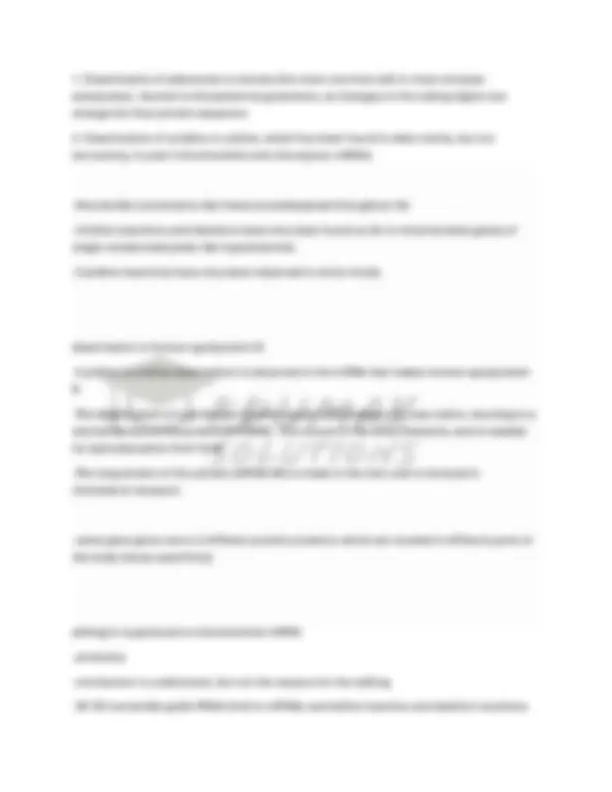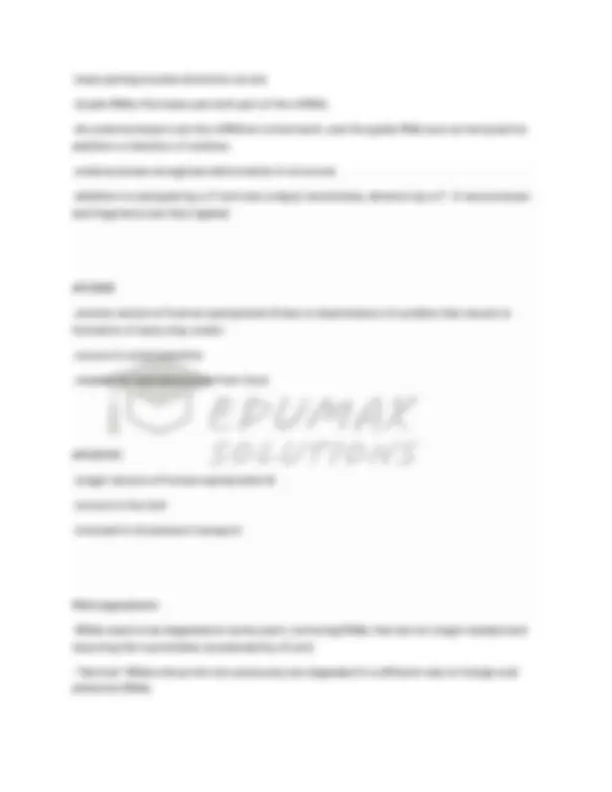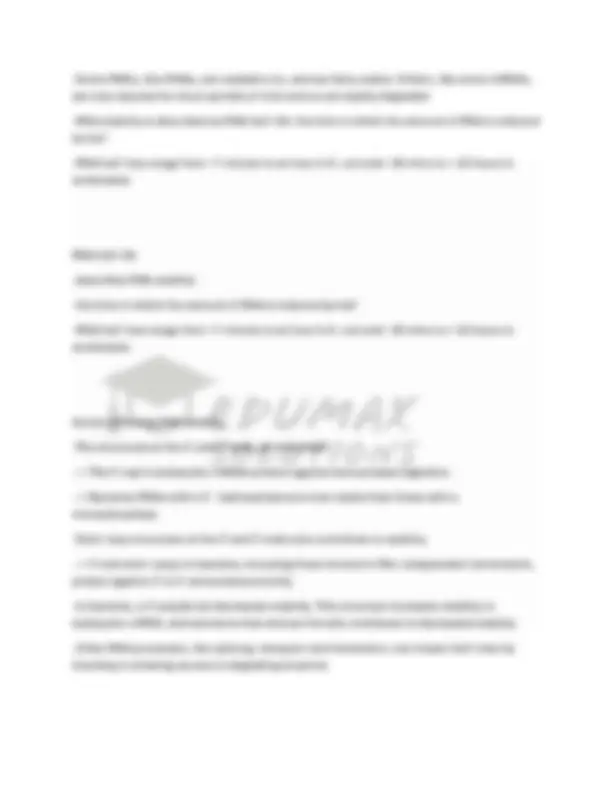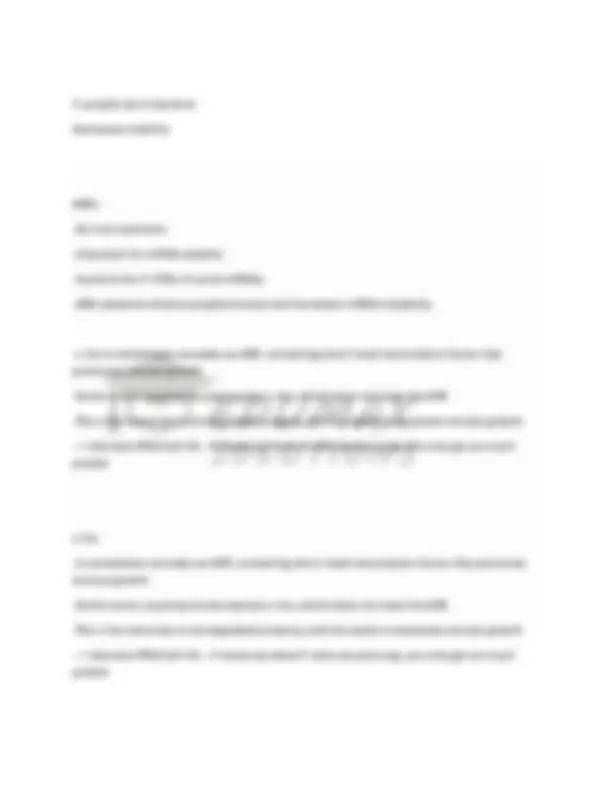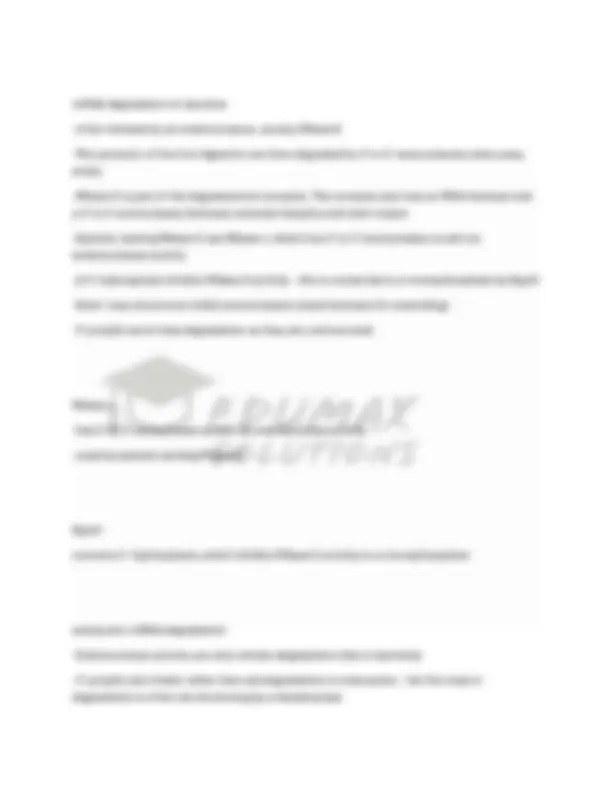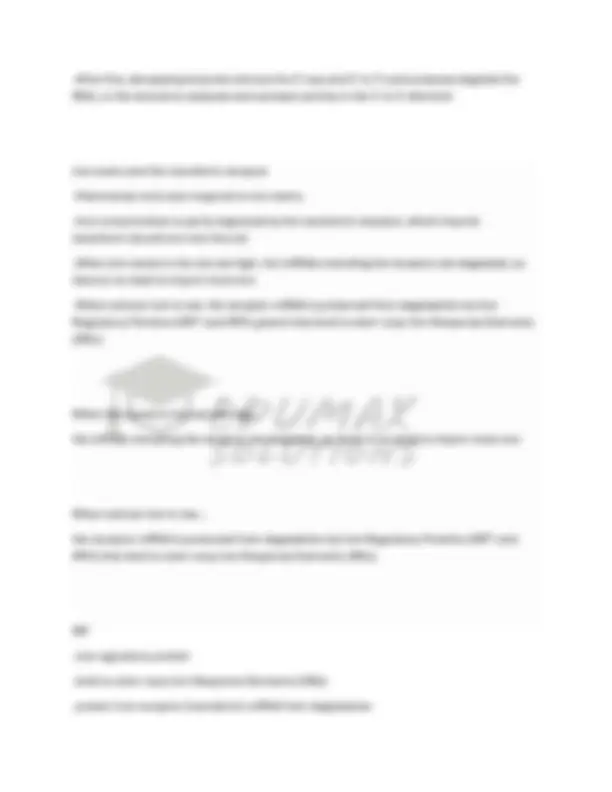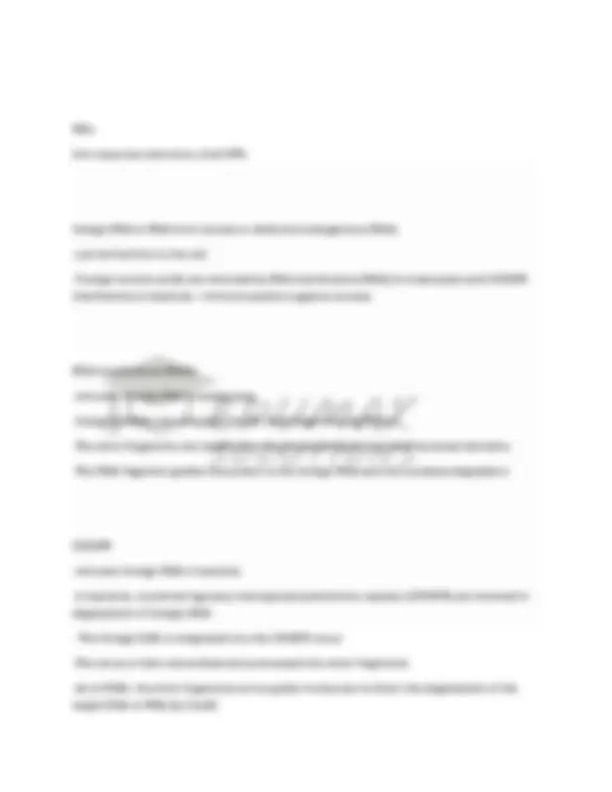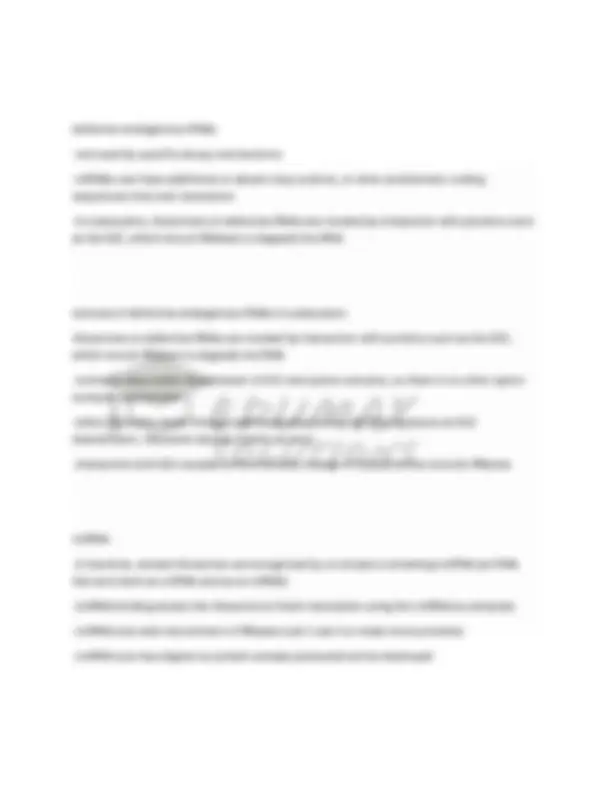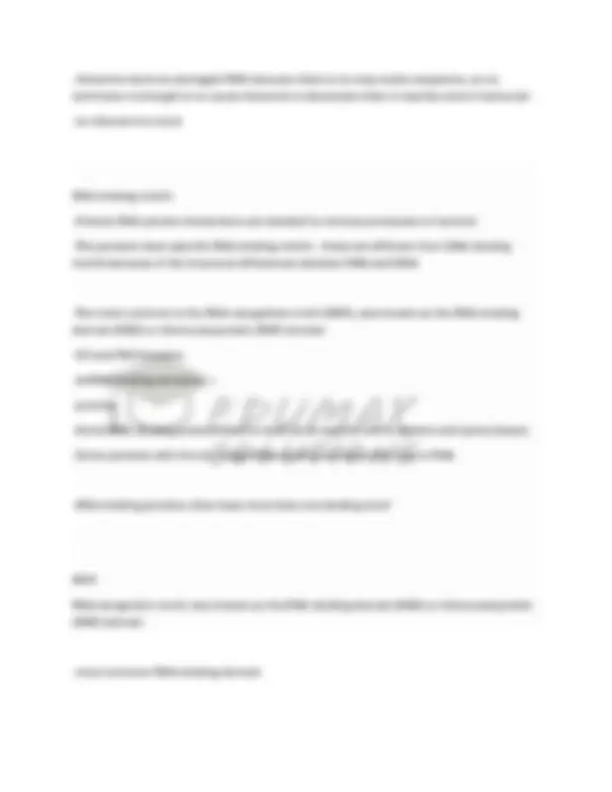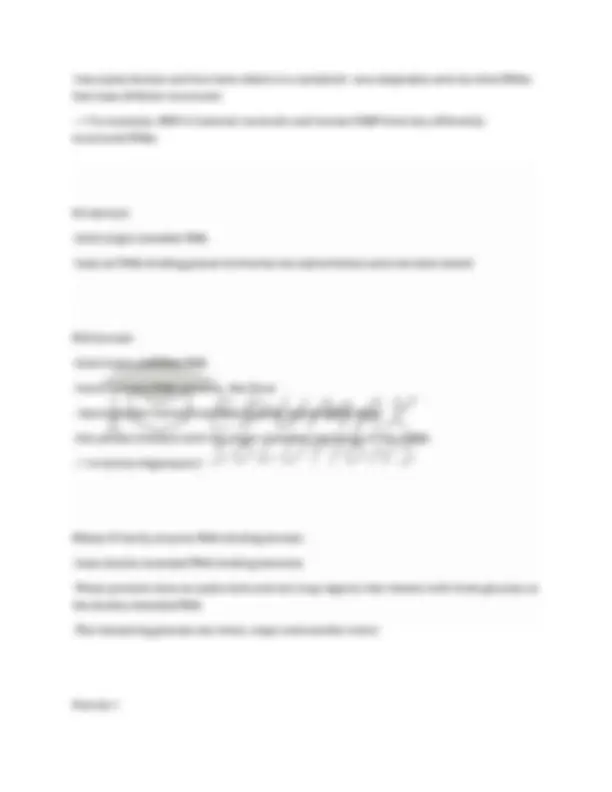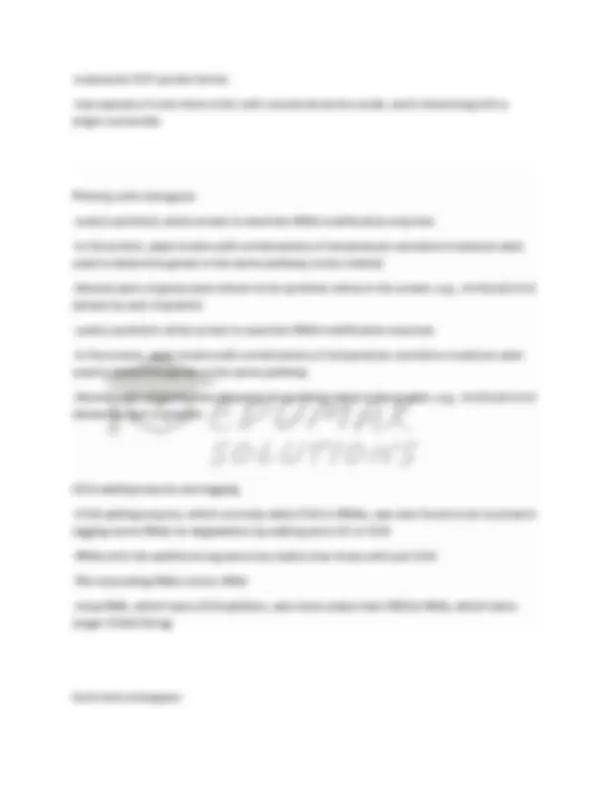Download BCHM 4360 ACTUAL EXAM 2 2025 VERIFIED RATIONALES WITH COMPLETE SOLUTIONS GRADED A and more Exams Biochemistry in PDF only on Docsity!
BCHM 4360 ACTUAL EXAM 2 2025 VERIFIED RATIONALES WITH COMPLETE
SOLUTIONS GRADED A
What is the information stored in DNA used for? to make a functional protein or RNA molecule Transcription the copying of one strand of DNA (coding strand) into an RNA molecule (transcript) transcript RNA translation reading of the mRNA sequence by the ribosome to produce a protein from the RNA molecule RNA polymerase
- large multi-subunit enzyme
- transcribes DNA
- copies the coding strand of DNA by using the complementary strand (the template or non- coding strand) as a template
- separates the DNA strands and allows nucleoside triphosphate to base-pair with the template strand
coding vs template strand coding = identical to mRNA template = noncoding/complementary to mRNA transcription can be divided into... initiation, elongation, termination initiation of transcription (overview)
- starts when RNA polymerase binds to the DNA sequence just preceding the gene (the promoter) = promoter recognition
- TSS = +
- RNA polymerase separates the DNA strands to make a transcription bubble, and the first few ribonucleoside triphosphates are added while the RNA polymerase is at the promoter
- when the RNA is a sufficient size, the RNA polymerase moves past the promoter and changes conformation to be more stably associated with the DNA (allows higher processivity) = promoter clearance When does transcription start? when RNA polymerase binds to the DNA sequence just preceding the gene (the promoter) = promoter recognition
- after promoter clearance, the RNA polymerase moves along the DNA, adding ribonucleotides and elongating the RNA transcript
- the RNA polymerase unwinds the DNA ahead of it, and the DNA re-pairs behind the enzyme, maintaining the transcription bubble along the DNA
- in the bubble, a short region of the transcript is paired with the DNA while the rest of the RNA is extruded from the polymerase
- elongation continues until the polymerase meets a DNA sequence called a terminator that signals RNA synthesis to cease (RNA polymerase then dissociates from DNA) transcription bubble
- much smaller than replication bubble
- contained within RNA polymerase
- maintained along DNA by RNA polymerase unwinding the DNA ahead of it, and the DNA re-pairing behind the enzyme
- has a short region of the transcript is paired with the DNA while the rest of the RNA is extruded from the polymerase How long does elongation continue (transcription)? until the polymerase meets a DNA sequence called a terminator that signals RNA synthesis to cease (RNA polymerase then dissociates from DNA) heavy regulation of transcription
- so only the required RNA is produced at the right times
- usually controlled by chromatin packing
chromatin packing and transcription
- chromatin packaged DNA presents a challenge to transcription
- nucleosomes prevent transcription machinery binding to DNA three additional types of enzymes required in eukaryotic transcription (due to chromatin packing)
- nucleosome remodeling enzymes that reposition histones away from the DNA to be transcribed (can also work to block transcription)
- histone chaperones, which disassemble and reassemble the histone octamer
- Asf1 and Caf1 (H3+H4) and FACT (H2A + H2B)
- enzymes that reversibly modify histone proteins in order to modify chromatin structure or recruit specific proteins to certain DNA regions
- HAT Eukaryotic RNA polymerases Usually 3:
- RNA pol I -- makes rRNA
- RNA pol II -- makes mRNA, small regulatory RNAs
- RNA pol III -- makes tRNA, 5S RNA, sn RNA plants have a fourth:
- RNA pol IV -- makes siRNA (regulatory RNA)
Subunits of RNA polymerase
- all have 5 central subunits that are similar in amino acid sequence, especially at the active site
- additional subunits in archaea and eukaryotic RNA polymerase are arranged around the 5 central subunits eukaryotes = 10-subunit core
- Rpb5, Rpb6, Rpb8, Rpb10, Rpb12 conserved in RNA pol I-III
- other 5 subunits different in RNA pol I-III C-terminal domain (CTD) of RNA pol II
- crucial for RNA pol II to couple transcription to processing of the RNA transcript
- C-terminus of the Rpb1 subunit
- many repeats of 7 amino acid sequence: Tyr-Ser-Pro-Thr-Ser-Pro-Ser
- targets for phosphorylation
- Pro = provides kink to allow kinase access amino acid sequence of CTD Tyr-Ser-Pro-Thr-Ser-Pro-Ser
- targets for phosphorylation
- Pro = provides kink to allow kinase access why is the trp operon so tightly regulated? because making trp is expensive (requires lots of energy)
when tryptophan levels are high...
- the ribosome quickly translates sequence 1 (open reading frame encoding leader peptide) and blocks sequence 2 before sequence 3 is transcribed
- continued transcription leads to attenuation at the terminator-like attenuator structure formed by sequences 3 and 4
- ribosome blocks 2, so it can't interact with 3, allowing 3 and 4 to form terminator in RNA pol near exit site when tryptophan levels are low...
- the ribosome pauses at the Trp codons in sequence 1
- formation of the paired structure between sequences 2 and 3 prevents attenuation, because sequence 3 is no longer available to form the attenuator structure with sequence 4
- the 2:3 structure, unlike the 3:4 attenuator, does not prevent transcription
- so transcription continues for all genes required for Trp synthesis activating transcription
- enchancing the binding of RNA polymerase to a promoter
- Ex: CAP activates more than 100 E. coli promoters when carbon sources are low CAP
- Catabolite activator protein, or cAMP receptor protein (CRP)
- activates more than 100 E. coli promoters when carbon sources are low
- CAP binds to the CAP operator, enhancing transcription which is STRONGLY ON in high glucose, available lactose conditions...
- lactose binds to the lactose repressor, preventing it form binding
- CAP does not bind to the CAP operator
- however, the lac repressor is not bound, there is WEAK transcription MerR family regulators
- can change the way promoter elements are spatially related to each other
- 19 bases is unusually larger the - 10 to - 35 distance, but the MerR protein can bind to the DNA and change its conformation to resemble the more common 17 bp spacing
- this conformational change allows RNA polymerase to bind more readily, so MerR protein activity ENHANCES TRANSCRIPTION spacing between - 10 and - 35 sequences
- can vary
- 17bp spacing = common
- if very large, RNA pol binding is weakened
- another layer of regulation
- can be modified by MerR family regulators NtrC
- activates genes that are important for nitrogen metabolism
- binds at enhance elements and activates transcription when phosphorylated
- phosphorylation triggers oligomerization of NtrC, and promotes interaction with the polymerization at the promoter
- oligomerization also stimulates the rate of ATP hydrolysis, which helps promote formation of the open complex
- causes looping of DNA that allows NtrC and pol to come together and provides P for ATP hydrolysis to open transcription activation of RNA pol holoenzyme containing σ
- needs to be activated by ATP hydrolysis to drive promoter opening
- NtrC = example of one of these activators response regulators
- collection of proteins that can do phosphorylation in bacteria
- responses to external signals often involve phosphorylation of a receptor protein that leads to a signaling cascade
- includes two-component signal transduction pathway, which has a sensor kinase (PhoR) and response regulator (PhoB)
- histidine in the sensor becomes autophosphorylated on receipt of the signal
- the phosphoryl group is then passed to an aspartic acid residue in a response regulator protein two-component signal transduction pathway has a sensor kinase (PhoR) and response regulator (PhoB)
- histidine in the sensor becomes autophosphorylated on receipt of the signal
lysis and lysogen are regulated by... levels of the DNA-binding proteins: cI, cII, and Cro
- bind to sites in the phage chromosome and control transcription at the 4 promoters: P(R), P(L), P(RE), P(RM)
- P(R) promoter first produces Cro and cII
- if there is enough cII, it stimulates transcription of P(RE), which produces cI
- cI stimulates P(RM), which makes more cI
- high cI levels bind to P(R) and P(L) and repress lytic genes and also activates transcription of intgrase Cro vs. cI and cII Cro = negative regulator cI and cII = positive regulator high cI levels promote and maintain lysogeny (keep virus in genome) by binding to P(R) and P(L) and repressing lytic genes What happens if not enough cII produced?
- cII competes with Cro, so Cro binds to P(RM) promoter and represses cI production, ensuring expression of lytic genes
- levels of cII are the crucial to whether the cell enters lysogeny or the lytic phase
cII levels
- crucial to whether the cell enters lysogeny or the lytic phase
- cII competes with Cro, so if not enough cII, Cro binds to P(RM) promoter and represses cI production, ensuring expression of lytic genes
- environmental factors regulate the levels of cII - cII is sensitive to host cell proteases
- if proteases are high active (in response to DNA damage), cII is degraded, cI cannot accumulate and the virus enters lytic growth
- if cII is maintained at high levels, cI accumulates and lysogeny is maintained if cII is maintained at high levels... cI accumulates and lysogeny is maintained binding affinities of cI and Cro
- binding affinities of cI and Cro at six DNA binding sites determines the choice between lysogeny and lysis
- cI has two domains that can form tetramers and oligomers
- Cro has a single small domain that binds as a dimer
- operators: O(L) and O(R) at the P(L) and P(R) promoters have three sites that cI or Cro can bind cI and operator binding
- DNA damage prompts the host SOS response, activating RecA
- RecA cleaves cI so it cannot dimerize or cooperate with other cI units (and cII)
- cI then dissociates from operator sites, allowing transcription from P(L) and P(R), allowing lytic growth anti-termination
- some phage lambda genes are transcribed only when transcription termination is actively prevented (regulation can also occur at the elongation and termination steps of transcript synthesis)
- initially, transcription from the P(L) and P(R) promoters successfully makes Cro and N, but encounters termination sites t(L) an t(R), terminating the transcript
- when N protein build up, it stops termination
- N binds to nut sites in the transcribed RNA in a step-loop form
- N inhibits Rho
- several proteins are recruited and interact with RNA polymerase, allowing it to transcribe through t(L) and t(R) Q protein regulation
- with termination at t(L) and t(R) suppressed (when N builds up), downstream genes can be transcribed, including Q
- Q protein overrides termination at the P(R) promoter, allowing transcription of late lytic genes
- Q prevents termination by binding to DNA
- Q binding site (QBE) is between the - 35 and - 10 of the P(R) promoter
- without Q, transcription terminates very easy, just downstream of - 10
- Q directly contacts the sigma subunit and allows elongation to resume
- Q remains associated with the elongation complex
- Q binds to Pol. and prevents it from stopping, starts it again --> get out of cell as quickly as possible P(R) promoter that first produces Cro and cII and can then produce lytic genes
- cI bind to it to repress lytic genes P(L)
- contains N and lytic genes
- lytic genes repressed by cI binding P(RM)
- gene for cI
- stimulated by cI (amplification)
- binds Cro if not enough cII, which represses cI production P(RE) genes for cII, Cro, cI
- stimulated by cII
- first to produce cI
ELK
recruits Mediator, which is generally needed for RNA Pol II transcription
- example of eukaryotes regulating transcription via DNA-binding proteins that recruit co- activators or co-repressors
- binds to serum response factor but doesn't activate transcription in the absence of mitogens
- phosphorylated by kinases activated by mitogen binding at the cell surface
- phosphorylated protein recruits Mediator, promoting transcription mitogens
- extracellular signals that promote entry into mitosis
- can lead to uncontrolled cell division in cancer
- binding at cell surface activates kinases, which phosphorylate ELK1, causing it to recruit mediator, promoting transcription regulation of galactose metabolism in yeast complex
- Gal4 regulates genes that are responsible for galactose metabolism
- Gal4 activates transcription by binding to the UASg sequence
- Gal4 activity is regulated by Gal80 and Gal3, which respond to galactose in the cell
- in the absence of galactose, Gal80 binds to Gal4, preventing transcription
- when galactose is present, Gal3 binds to Gal80, preventing Gal80 binding to Gal4, and allowing Gal4 to recruit SAGA and Mediator which activates transcription (only turned on when galactose present)
Gal4 domains
- Activator domain
- DNA binding domain
- if 2 domains are separated and fused to other proteins/genes only protein that interact will cause transcription (brought in close enough proximity to engage transcription machinery) Ume
- responds to nutritional cues in yeast and can activate or repress transcription
- when there is enough N and C in the cell, Ume6 binds DNA and recruits co-repressors (Sin3, Rpd3, Isw2) --> Rpd3 = histone deacetylase - promotes more compact chromatin, which represses transcription --> Isw2 = nucleosome remodeling enzyme, which helps establish altered chromatin pattern
- Ume6 is phosphorylated in the absence of N and C, Sin3 and Rpd3 dissociate, and a co- activator Ime1 is recruited Sin co-repressor recruited by Ume6 when there is enough N and C in the cell Rpd
- histone deacetylase - promotes more compact chromatin, which represses transcription
- co-repressor recruited by Ume6 when there is enough N and C in the cell

